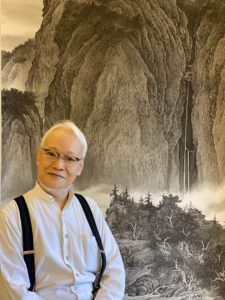超越出版社
劉墉
By SYZ站長 | 2014/06/04 |
1. 中英文介绍
2. 繪畫簡介與評論
3. 中文年表
4. 英文年表
| 劉墉(1949年2月26日-),本名劉鏞,號夢然。生於臺北,國際知名畫家、作家、教育家。曾任美國丹維爾美術館駐館藝術家、紐約聖若望大學專任駐校藝術家、廈門大學客座教授。 出版小說散文著作一百餘種,被譯為英、韓、越、泰、捷克等國文字發行,作品收錄在兩岸中小學教科書,是華文界著名的暢銷作家。曾在國父紀念館、國立臺灣博物館、北京畫院、浙江美術館、遼寧省博及美國各地美術館舉行個人畫展三十餘次,中英文藝術論著在全球發行。他也是慈善家,長期資助兩岸公益團體,幫助貧困學生並在中國大陸捐建希望小學四十所。 |
劉墉一九四九年生於台北,紐約哥倫比亞大學美術教育博士研究,聖若望大學東亞研究所碩士,國立台灣師範大學美術系學士,曾任美國丹維爾美術館駐館藝術家、紐約聖若望大學專任駐校藝術家、聖文森學院副教授、廈門大學客座教授、中國電視公司駐美代表。現任專業作家、畫家。著有文學、藝術理論作品一百餘種。
劉墉在繪畫方面出頭極早,一九六四年即獲得台灣“全省學生美展”大學高中組第二名教育廳長獎。一九六八年以第一志願考取台師大美術系,一九七一年獲得系展第一名教育部長獎。一九七二年應邀參加“亞細亞現代美展”。一九七四年開始應邀(免審查)“全國美展”,一九七八年由“國立歷史博物館”推薦前往美國巡迴畫展及講學,應聘為維州丹維爾美術館駐館藝術家,一九八O年開始擔任紐約聖若望大學專任駐校藝術家達十年之久,出版中英文繪畫理論作品十餘種,並在世界各地舉行個展三十餘次,作品由國立歷史博物館、國父紀念館、中正紀念堂、國立臺灣美術館、浙江美術館、遼寧省博及海外許多博物館收藏。二OO七年開始作品連續進入香港蘇富比、紐約佳士得、匡時、保利等國際拍賣。紐約水雲齋、台北羲之堂、北京人民美術出版社、甘肅人民美術出版社、浙江人民美術出版社和北京中華書局、遼寧省博等出版有《劉墉畫集》、《劉墉的藝術世界》、《劉墉的情與藝》、《書卷江山──劉墉作品集》、《像畫一樣美麗》、《夢筆生花——劉墉畫集》等畫冊及畫集、畫論畫法(中英文版)十餘種,於全球發行。著名收藏家林木和、曹興誠、劉益謙、何鴻燊家族等都購藏有劉墉的畫作。
在電視方面,劉墉製作並主持台灣最早的電視新聞評論節目「時事論壇」曾獲金鐘獎;並被台灣綜合電視週刊讀者票選為「最受歡迎電視記者」,旋轉任中視駐美代表。一九九一年應財團法人廣播電視發展基金會邀請返台,主持《中國文明的精神》製作及腳本編撰。二OO八年應香港鳳凰衛視邀請,編寫並主持《世說心語》。二O一五年應台灣公共電視《一字千金》邀請,主持《漢字好好玩》單元。
在戲劇方面,劉墉曾主演《紅鼻子》、《武陵人》等舞臺劇,並獲得“中國話劇欣賞演出委員會”頒優秀男演員金鼎獎。在詩歌方面,劉墉曾獲中國新詩學會頒「優秀青年詩人獎」,他創造了朗誦詩指揮法,並將歌舞樂結合的朗誦詩劇推上“第二屆世界詩人大會”的國際舞臺。
劉墉在繪畫方面的最大成就,是獨創噴染皴擦法,將現代噴墨技巧與傳統國畫皴法結合,他的沒骨花鳥則被國際藝評家讚賞有過於惲壽平。他最著名的藝術理論作品是以《Ten Thousand Mountains》專著實證中國繪畫的符號象徵主義,並在太平洋文化基金會的獎助下為黃君璧、林玉山撰寫《白雲堂畫論畫法》與《林玉山畫論畫法》,為大師的畫學做傳承的工作。
劉墉的文學作品早被選入兩岸中小學教科書,四十餘年寫作近百本,暢銷而且長銷,尤其是他的勵志作品,對年輕一代有深遠的影響,並被翻譯為英韓泰文出版。他最特有的寫作方法是以不同案例或小說段落,形成張力並製造思想的空間。他的小說擅於描寫內心的糾葛、精神的變化,並以虛中帶實的方式,呈現魔幻寫實的效果。他也喜歡自然寫作,著有描寫昆蟲的《殺手正傳》、蒔草種花的《花癡日記》、大雁生態的《啊啊》。
劉墉還鑽研中國語言節奏,八十年代即發表專文,分析中國語言的自然律動。他同時編寫出版數十萬言的《唐詩句典》,將唐詩句分類,進而探討唐代詩人的生活。近年則致力文字學專書,透過插圖剪影和各種書體,分析漢字的演變。以他在台灣公共電視節目中講解《漢字好好玩》編輯的DVD,2015年由台灣公共電視出版。
劉墉也以版稅及演講收入捐助兩岸及世界華人公益團體。自一九九九年開始在中國大陸捐建希望小學,迄今達四十所。
(以上細節可見於下附之“劉墉年表”)
Yung Liu is a writer, painter, and educator born in Taipei, Taiwan in 1949. He is also the founder of Shui Yun Zhai Cultural Enterprises and a philanthropist who has built over 40 schools in rural China.
Liu arrived in the United States in 1978 when he became China Television’s representative in the U.S. and also artist-in-residence at the Danville Museum of Fine Arts and History in Virginia. He was then invited to be artist-in-residence at St. John’s University in New York, where he obtained a Master’s degree in East Asian Studies, before pursuing a Doctorate degree in Art Education at Columbia University.
Having written over 100 books that range from non-fiction essays to novels, Liu is a best-selling author in Mainland China and Taiwan. His books have been translated into English, Korean, Vietnamese, and Thai. Liu has toured Mainland China, Taiwan, Malaysia, and Singapore to speak on educational topics before audiences of thousands.
Liu has held over 30 solo exhibitions, and his paintings have been collected by museums across Asia and Europe. Sotheby’s, which regularly auctions his works, describes his unique style as the combination of utilizing ancient techniques, developing a contemporary manner, and contemplating philosophical thoughts. He commonly uses fine lines and delicate yet powerful brushstrokes to depict landscapes, birds, and flowers. Art critics have especially praised his “boneless” style as one of the highest achievements in Chinese fine arts history.
| 劉墉繪畫方面中英文簡介 | |
劉墉(1949──.生於台北.生父祖籍浙江臨安。養父祖籍北京。) 劉墉是當代公認的才子,在藝術、文學、言語、戲劇、新聞❶上都卓然成家,而且成名極早。他在二十三歲即應邀亞細亞現代美展,二十五歲開始應邀歷屆(免審查)全國美展。二十八歲作品入藏國立歷史博物館、國父紀念館和中正紀念堂。二十九歲應聘為美國維州丹維爾美術館駐館藝術家,三十一歲成為紐約聖若望大學專任駐校藝術家。他不但是國立台灣師範大學美術系系展第一名的高材生,也是台灣山水及花鳥走獸大師黃君璧、林玉山的入室弟子❷,加上他留學美國的西畫根底、「觀物精微」的寫生功力和文學素養,使他順手拈來,都氣韻非凡、自成一家❸。 注❶文學──劉墉的作品被台灣金石堂統計為十五年來暢銷數第一名的作家。一九九九年由中國圖書商報年度統計,當年文字類排行榜,劉墉的作品佔五分之一,並譽其為超級暢銷作家。 著名藝評家對劉墉繪畫作品的評論: “Since ancient times, the Chinese have valued literary talent and education as the foremost qualities. For a literati artist, proficiency in poetry, calligraphy, and painting are all essential. Among contemporary artists, there are few who excel in both literature and art, and Mr. Liu is undoubtedly one of a kind. We admire him, not only for his literary talent but also for his painting. We like to hear him discuss his profound understanding and vivid portrayal of flowers because flowers are living entities; painting them is not merely a matter of form but rather the expression of their spirit. This spirit must be derived from a deep understanding of the essence of various flowers and meticulously refined. It is a truly rare to see.” –Jay Xu, Director and CEO, Asian Art Museum (San Francisco) “Liu Yong’s work undeniably captures the ever-changing aspects of time – from dawn to dusk, from sunny days to rainy, windy, and snowy ones. His portrayal of various branches and clusters of flowers exhibits a diversity of forms and remarkable beauty, each finely detailed and exquisite. His depictions of delicate flowers without stiff structure can be likened to the hidden secrets passed down from the likes of Xu Chongsi and Yun Shouping, yet at times, even surpassing them.” –Zhang Longyan, President, National Taiwan University of the Arts “Liu Yong’s paintings are like poems; they are reflections free from worldly distractions. They are a rejection of ostentation in favor of simplicity, a transcendence of theory through deep insight. They are the spiritual flowers derived from the contemplation of all things, a serene observation.” –Deng Changguo, President Emeritus, National Taiwan University of the Arts “I have recently had the privilege of perusing the floral and avian studies by Mr. Liu Yong, and I am truly amazed and impressed by his unwavering dedication and meticulous effort. His portrayal of flowers, from buds to full bloom, and the various angles, inclinations, and transformations they undergo, as well as his depiction of birds, down to each feather, beak, and claw, reflect the handiwork of a true master of nature.” –Huang Junbi, artist “Liu Yong, with the keen sensibility of an artist and a profound foundation in traditional Chinese painting techniques, combined with the rigorous scholarly attitude of the Western tradition, has devoted over a decade to the study of landscapes, flowers, and birds. He not only grasps the physical aspects and forms of his subjects but delves deep into their essence. From the anatomical analysis of flowers and birds to the observation of their ecological context, from recording the tiniest details of feathers and petals to creating a sense of atmosphere, he has reached a state of artistic perfection.” –Wang Xiuxiong, former Chair of Fine Arts, National Taiwan Normal University “His [Liu Yong’s] journey has taken him across the globe, where he meticulously sketched the most remarkable landscapes. Employing modern photographic techniques, he undertook the task of unraveling the profound wisdom of Chinese landscapes, conducting a profound quest to ‘root’ himself in this art form. His vision is not only broad but also profoundly inspirational. Upon viewing his work, I am deeply moved and filled with boundless joy. We, as artists of this generation, have indeed not let this grand era pass us by. On the surface, we may discuss painting techniques, but in reality, we possess the ambition to shape our era.” –Li Lincan, former Vice President, National Palace Museum “In the contemporary world of arts and culture, Liu Yong is universally recognized as a brilliant star. A rare talent who excels in poetry, prose, painting, and performance, his writings consistently top bestseller lists and are widely appreciated and admired by readers. In the realm of artistic creation, he shines brilliantly, with each new work making a profound impact, resonating through time, and standing out as extraordinary. … His achievements are not solely the result of his enviable natural talent but also stem from his admirable scholarly rigor. He has a comprehensive understanding of both ancient and modern knowledge from various cultures, fostering a broad and open-minded perspective.” –Wang Kai, Honorary Chairman, Chinese Art Association “This [Ten Thousand Mountains] is a book that delves deep into the traditional techniques of Chinese landscape painting using a scientific approach. For each type of tree, rock, leaf, brushstroke technique, as well as waterfalls, forest birds, and pavilions, it not only introduces their traditional methods of representation but also provides photographs of real landscapes and sketches, enabling aspiring artists to avoid falling into the trap of conventional methods. Readers, when appreciating the art, can gain insight into the relationship between symbols in traditional landscape painting and the natural world. Most importantly, it demonstrates the scientific nature of ancient Chinese landscape painting and urges contemporary traditional artists to re-observe and reflect upon the natural world.” –He Haotian, former President, National Museum of History (Taipei) “What is especially admirable in Mr. Liu Yong’s artistic expression is the ‘introduction of objective beauty into the pleasure of subjective emotions,’ enabling his techniques to reach a state of perfection and refinement of taste, where form and subject are seamlessly integrated. … To appreciate his paintings, one must also understand his thoughts through poetry and literature, and appreciate them aesthetically. Whether it’s the sentiments of literati, the poetic insights, or the intersection of knowledge and imagination, his artistic accomplishments reflect his temperament, aspirations, and ideals. They also bear witness to the power of many theories and practices throughout history and society. … Liu Yong’s artistic aesthetics and expressions embody the integrity of intellectuals and align with the rejuvenation of Chinese culture.” –Huang Guangnan, President Emeritus, National Taiwan University of Arts “Liu Yong continuously refines his art; he continuously absorbs learnings from others, confronts nature, studies nature, constantly listens to nature’s sounds. And then through a spiritual understanding, he transforms these into individualized expressions and visual images. … This type of originality in expressive techniques completely breaks through the structure of traditional ink art. He uses an even more free, an even more subjective energy to confront nature and express nature. He expresses one’s own understanding of nature and one’s own creation of nature.” –Jia Fangzhou, curator and art critic “For an artist to excel in both meticulous precise realism and the ability to liberate himself from concrete objective forms, even depicting the emotions, feelings, and thoughts in their hearts with imagery—one must possess a touch of genius.” –Shao Dazhen, PhD supervisor, Central Academy of Fine Arts “I feel that Liu Yong’s works have a characteristic worth highlighting, which is that no matter what he does, the works all have a very intense and very distinctive sense of emotion. … They all use emotion to express the true feelings within his own inner world. This is something that all artists and art critics ought to learn from. … This is the interaction of cultures, as well as the soul roaming and seeking its roots. His paintings make us understand, and that’s why they are a link on the chain that connects cross-strait history and culture.” –Lang Shaojun, PhD supervisor, Chinese National Academy of Arts “Liu Yong’s imagination is extremely rich. He has the big picture and also has the details, with a very freeing emotion. Not all artists can think in both these ways simultaneously. … Poetry and prose’s narrative methods, like sisters, appear in the paintings, giving us a fresh perspective.” –Liu Xilin, former Academic Director, National Art Museum of China “The conflict between modernity and tradition in Mr. Liu Yong’s paintings is not merely a reflection of the serious cultural situation but also an aesthetic one. I believe it is precisely his approach to dealing with traditional and modern elements from both Chinese and Western art as aesthetic and stylistic issues that has led to Mr. Liu Yong’s current status.” –Chen Jianlan, Deputy Editor-in-Chief, Chinese National Academy of Arts “One could never find traditional ink stroke techniques in Liu Guosong’s work; he purposely deconstructed ink strokes. In Liu Yong’s work, however, we can see traditional ink strokes and contemporary ink art come together. … This distinguishing feature of Liu Yong is very much worth our attention and study.” –Shang Hui, Executive Editor, Art Magazine “Why is Liu Yong able to continually traverse various industries, constantly engage, and comfortably handle these cross-disciplinary endeavors? I believe it stems from an inner tension. … The dual psychological framework of ‘being vast’ and ‘being meticulous’ is precisely the foundation that allows Mr. Liu Yong’s art to reach its current state and exhibit his distinctive characteristics.” –Zheng Gong, Deputy Director of the Institute of Fine Arts, Chinese National Academy of Arts “Mr. Liu is very familiar with tradition and uses it flexibly. He stands out in how he merges literature and painting. Literature and painting also merge in both real and imaginary ways, linking sight and thought, a kind of transformation of time and space.” –Cui Yongnian, PhD supervisor, Central Academy of Fine Arts “If we don’t view from the perspective embraced by emotions and feelings, we cannot understand. If it’s not the embrace between the tradition of ink strokes and the emotional spirit behind it, then how could he so passionately utilize both? This is also how I understand many Taiwanese artists. When they express the spirit of the home country and the memory of history, they often have more weight, more energy, more enthusiasm than mainland Chinese artists.” –Deng Pingxiang, art critic and Vice Chairman, Hunan Province Art Association “In terms of his painting genres, Liu Yong covers landscapes, flowers and birds, and abstraction. Regarding painting techniques, he seamlessly incorporates both traditional methods like ‘cunfa’ (texture strokes) and ‘mogu’ (boneless) flower and bird painting, as well as contemporary techniques such as spraying ink. Mr. Liu Yong excels in creating spatial depth and rich color harmonies, allowing him to depict both materiality and form with precision. Most importantly, he masterfully combines literature and painting, which mutually enhance each other.” –Yu Liangfeng, Vice President, Zhejiang Art Museum “Mr. Liu Yong, as such an extraordinary artist, paints in this manner, and he dares to exhibit his work at the doorstep of the China Academy of Art. Is he intentionally provoking with his actions? There is a reason for Mr. Liu’s approach. He expresses himself, and he finds joy in it. We have previously produced works like ‘Along the River During the Qingming Festival’ that have incredibly detailed precision. Why shouldn’t we continue this tradition?… He paints whatever he finds beautiful. He is an emotionally driven artist with a self-centered, multi-faceted, cross-disciplinary, radiating, and divergent approach. His focus revolves around the essence of Chinese art, and his emotional tastes are undeniably Chinese. Therefore, from this perspective, he is a quintessential Chinese artist.” –Lin Mu, President, College of Arts at Sichuan University “He is not only painting. His thought process is very astute and very open. I think he’s already in his own world of freedom – I do what I love, I paint however I want, I don’t care about other people’s comments. This is what I believe is worth us learning from: unconstrained, but not harming anyone else’s interests, rather expressing one’s own aesthetics to one’s heart’s content. … In general, he is relatively abundant in subject matters, and his aesthetics aren’t limited to one source. He is inspired by all aspects of society, all aspects of the world, and therefore his works have different faces. However, his foundation in traditional Chinese painting is extremely solid.” –Ren Daobin, professor, China Academy of Art “I feel that Mr. Liu Yong possesses an astonishing talent, overflowing with creativity. In fact, I sense that he can quickly absorb and be influenced by everything he sees and hears in his life, turning it into his own work and presenting it to the world. His personality is passionate, exuberant, and dynamic, while his paintings are relatively serene. I believe that his art may serve as a means of personal balance and a way to conquer aspects of his own life. Of course, his dynamic personality is still subtly embedded in his artwork and reveals itself. In other words, there is motion within stillness, and this unique quality is what sets his art apart and makes it so captivating.” –Shu Shijun, researcher, Beijing Fine Art Academy “My biggest takeaway from Mr. Liu Yong’s exhibition is the importance of being spontaneous and following one’s heart. You must be spontaneous to follow your heart, as without spontaneity, you won’t even know what it means to follow your heart. This is a tradition in Chinese painting that we must carry forward.” –Yu Chunming, professor, Nanchang University “Liu Yong’s literature and painting share a commonality: they often break the boundaries we traditionally set within a specific domain. These boundaries were once considered a matter of convention, or what we deemed ‘correct.’ But he has the capricious temperament of a talented individual, which enables him to break boundaries, cross borders, and merge domains.” –Xia Lie, professor, Hangzhou Normal University “He [Liu Yong] pays meticulous attention to the atmosphere in his paintings. This atmosphere differs from the artistic mood; it leans towards strength, masculine energy, expansiveness, and bravery. It pursues grandeur and vigor.” –Wu Zhixiang, Editor, Zhejiang Education Journal “He [Liu Yong] is a pure artist, very pure. I believe that in this bustling world, especially since Mr. Liu resides in New York, it’s not easy to maintain such a pure and childlike heart, such a deep passion and devotion. It is incredibly rare to preserve this purity throughout one’s life. I think this is something that everyone can deeply contemplate and learn from.” –Xu Xinru, Associate Director, Silicon Valley Asian Art Center “Throughout his life, Mr. Liu Yong has continuously climbed to higher levels, consistently reaching new horizons. The context of this art exhibition vividly reflects his ongoing process of surpassing himself. From early on, he learned from the ancient masters, from contemporary artists, and from nature itself. He has successfully transitioned from realism to romanticism, showcasing his progress and transformation.” –Chen Wei, Director of Collections Department, Zhejiang Art Museum “Considering the tradition of literati paintings, Liu Yong might be a model of our contemporary times. His landscapes, birds and flowers, realist style, freehand style, and genre paintings don’t stick to one pattern. Whatever he wants to paint, he paints. And whatever he paints, it’s exquisite. … This type of traditional literati spirit—whether in Liu Yong’s literary works or art works, or even his public speaking and other forms of art like drama—is like a style of the Wei Jin era.” –Zheng Chong, President, Zhejiang Cultural Publishing Co. “Liu Yong studied deeply for decades and invented his “spraying and rubbing technique.” He uses it to compose three-dimensional lightness and darkness, the deep and tender dreamscapes of ink and water. He uses it to express life’s profoundness, luxuriousness, and brightness.” –Shu Jianhua, Director, Silicon Valley Asian Art Center “I would like to use five phrases to describe his paintings in summary. First, there is literature within art, and art within literature. Second, there is West within East, and East within West. Third, there is interpretation within realism, and realism within interpretation. Fourth, there is modernism within tradition, and tradition within modernism. Fifth, there is emotion within scenery, and scenery within emotion. … In Mainland China and Taiwan, as well as in the Chinese-American art world, Liu Yong is an emblematic master of culture and arts.” –Si Shunwei, President, Zhejiang Art Museum Liu Yong (Yung Liu) is an artist, author, educator, and philanthropist. He has influenced four generations of Chinese culture through 100+ books and courses—with topics ranging from motivational life lessons, to painting techniques, to children’s fables. His paintings are in the permanent collections of Liaoning Provincial Museum and Zhejiang Art Museum, among other museums and institutions around the world. Born in Taipei, Liu studied Fine Arts at National Taiwan Normal University and immigrated to the U.S. as artist-in-residence at St. John’s University. Having lost his father at age 9 and his house in a fire at age 13, childhood memories profoundly inspire Liu’s work. He most frequently paints nighttime scenery because he remembers sleeping in his father’s lap while fishing at night, listening to the water and smelling the ginger flowers. He also remembers stretching out bedsheets with his mother, how they sprayed water from their mouths to smoothen the wrinkles. This developed into one of Liu’s experimental techniques since the 1970s: blowing ink onto paper through an L-shaped tube. He repeatedly wrinkles and irons the paper, repels the ink with wax and cutouts, and rubs the ink with eraser. Liu’s art also embodies the essence of literature. Like reading a book, viewers can take time to “read” the imaginative drama and dialogue in his paintings. One can “live, play, and listen” in the world of the painting. Publications and exhibitions frequently present Liu’s art alongside his poetry and prose. Liu’s guiding principles are love and natural harmony. For his take on the Birds and Flowers genre, he obsessively studies and observes nature, to internalize the beauty of nature’s creations and capture their true spirit. Whether bees or pigeons or decaying wildflowers, all subjects are endowed with human emotions and personalities. Meanwhile, each painting’s elements harmonize through a holistic dance. Liu lives and works between New York and Taipei. |
| 劉墉年表 |
一九四九 祖籍北京,二月生於台北市,乳名姚小毛。父親姚士恆,母親周華英。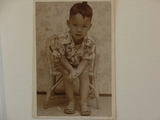  童年的劉墉是天之嬌子。 一九五二 過繼給劉世駿陳淑華為子,並改名為劉鏞。 一九五四 生父姚士恆逝世於台北,享年四十三歲。 一九五五 入台北市龍安國民小學。 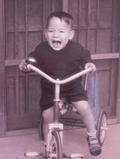  劉墉生長在富裕的家庭。 一九五八 養父劉世駿逝世,享年五十一歲。 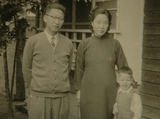  劉墉三歲與養父母合影。 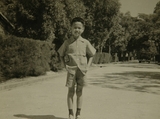  攝於九歲,養父逝世那年。 一九六O 獲台北市教育局辦全市演講比賽小學組第一名。 代表台北市獲教育廳辦全省演講比賽第三名。 一九六一 入台北市大同中學夜間部。 一九六二 家中失火,夷為平地,母子二人於廢墟間築一草房以棲身。 一九六四 遷居台北市金山街一棟小木樓。 師從胡念祖先生習國畫山水。 入台北市成功高中。 獲台灣全省學生美展教育廳長獎(大專高中組第二名)。 獲台北市教育局辦全市演講比賽高中組第一名。 代表台北市獲台灣省教育廳辦全省演講比賽高中組第一名。 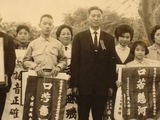  劉墉曾四次獲得台北市演講比賽第一名,並代表台北市於十八屆全台演講比賽中得到冠軍。 一九六五 獲台北市教育局辦國語文競賽演講第一名。 再獲台灣全省學生美展教育廳長獎。 因肺病休學,在家自修繪畫及詩。 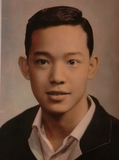  17歲因病休學期間。 師從郭豫倫先生習素描、水彩。 一九六六 復學,任校刊《成功青年》編輯及設計。 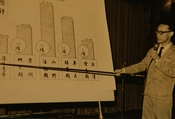  18歲擔任救國團暑期活動設計委員。 一九六八 以第一志願考取國立台灣師範大學美術系。 一九六九 任中國寫作協會師大分會負責人,主編《文苑雜誌》。 與師大同學畢薇薇相識,同演校內舞台劇並戀愛。 遷居至台北市長安東路鐵道邊違建貧民區。 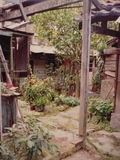  台北長安東路鐵道邊的違建。 一九七O 主演《紅鼻子》(姚一葦編劇,又名《快樂的人》)舞台劇。 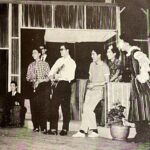  劉墉主演姚一葦編劇的《快樂的人》(原名紅鼻子),獲得話劇欣賞演出委員會頒最佳學生男演員金鼎獎。 編導朗誦詩《巨人頌》,獲“全國青年學藝競賽”第一名。 參加在國立歷史博物館國家畫廊舉辦的第一屆全國書畫展。 一九七一 獲“中國新詩學會”頒發“優秀青年詩人獎”。 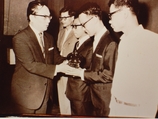  獲文化局長王洪鈞頒發優秀青年詩人獎。 與畢薇薇在台北地方法院公證結婚。 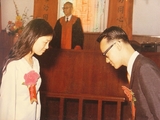  與師大同學畢薇薇自己跑去法院公證結婚。 指導詩劇《宋王台畔》(趙滋蕃詩),獲新詩學會“全國朗誦詩競賽”第一名。 獲話劇欣賞演出委員會頒發最佳男演員“金鼎獎”。 獲國立台灣師範大學學生最高榮譽“進德修業獎”。 一九七二 獲國立台灣師範大學美術系師生美展國畫第一名“教育部長獎”。 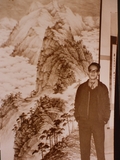  劉墉與他得到教育部長獎的巨作《谿山雪霽圖》。 《聽蜀僧浚彈琴圖》由“國立歷史博物館”選送第八屆中日美術交換展。 任“中國新詩學會”副總幹事。 主演《武陵人》(張曉風編劇)舞臺劇。 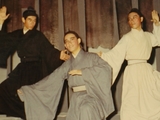  劉墉曾獲得舞台劇最佳男演員金鼎獎,這是他演出《武陵人》的劇照。 師大畢業,應聘為台北市成功高中美術教師。 參加第二屆全國書畫展。 育子軒。 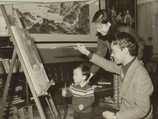  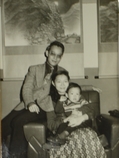  劉墉夫妻與劉軒。 於《幼獅文藝》發表〈中國繪畫的符號〉,是為一九八四年出版之《山水寫生畫法》的理論基礎。 主持台灣及金馬地區最大規模電視聯播《全民自強晚會》。 應聘為中華電視台特約節目主持人。 一九七三 主持中視益智節目《分秒必爭》。   劉墉在中視主持的益智節目《分秒必爭》曾廣告滿檔、收視第一。 應聘為中國電視公司新聞部記者。 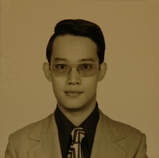  26歲擔任中視新聞主播。 應聘為師大噴泉詩社指導教授。 出版《螢窗小語》第一集。(其後至2023年共出版117本。以下爲求精簡除與繪畫有關者不列) 代表出席第二屆世界詩人大會。製作並與邱燮友教授聯合執導“中國詩之夜”。 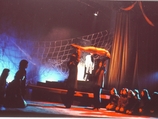  劉墉導演大型舞台詩劇《宋王台畔》在台北「國立藝術館」演出。 應“國立歷史博物館”邀請參加第二屆當代名家畫展。 應聘為中國電視公司基本演藝人員。 一九七四 應邀免審查參加第七屆《全國美展》。 應聘為淡江大學“吟燈詩社”指導教授。 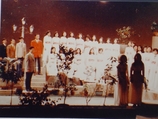  劉墉導演的大型朗誦詩在台灣電視播出。 獲中山學術文化基金會獎助出版《螢窗小語》第二集。 應邀參加第三屆當代名家畫展。 應“國立歷史博物館”邀請參加“中國名家美國巡迴展”。 開始《唐詩句典》編類整理工作。 應邀參加第十屆亞細亞現代美展。 一九七五 應“中國畫學會”邀請參加“中國名家日本巡迴展”。 代表中華民國美術教育協會赴日韓考察。 獲中山學術文化基金會獎助出版《螢窗小語》第三集。 應邀參加第四屆當代名家畫展。 應台灣省立博物館邀請舉辦首次個人畫展。 畫作入藏中正紀念堂。 應邀在香港世界華人基督教大會中主演舞台劇《庚子年》(張曉風編劇)。 應邀參加第十一屆亞細亞現代美展。 一九七六 製作並主持台灣中視《時事論壇》節目,獲金鐘獎。 應邀參加紐約聖若望大學亞研中心中國當代名家展。 出版《螢窗小語》第四集。 應邀參加第十二屆亞細亞現代美展。 《螢窗小語》由國防部選印為官兵優良讀物。獲國防部榮譽紀念狀。 應邀參加美國華李大學杜邦美術館畫展。 與周澄 、林千乘、李義弘、凃璨琳合組“西窗雅集畫會”。並在省博舉行聯展。 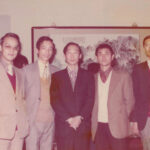  西窗雅集畫會。 應國立歷史博物館邀請參加第五屆當代名家畫展。 由藤田梓製作劉墉主持之《音樂之窗》(中國電視公司節目)獲得紐約「國際電影電視節」最佳音樂文化節目金牌獎。 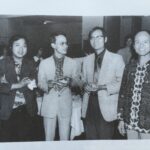  與吳昊、李錫奇、廖修平、陳庭詩在美國新聞處四人版畫展合影。 畫作入藏美國華李大學杜邦美術館。 一九七七 出版詩畫散文集《螢窗隨筆》。 畫作入藏“國立歷史博物館”。 應邀免審查參加第八屆全國美展。 應邀參加美國加州工業科學博物館“中華現代美術工藝展”。 應邀參加第十三屆亞細亞現代美展。 應德航邀請赴挪威、英法德意訪問,並在中視製作主持《歐洲藝術巡禮》。 在台北省立博物館舉行第二次個展。 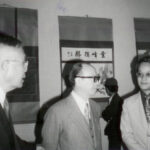  在台灣省立博物館舉行第二次個展。左起為張其昀、梁實秋、劉墉、頋炳星。 遷居台北英倫大樓。 應邀參加國父紀念館當代名家畫展。 獲《綜合電視週刊》讀者票選為最受歡迎電視記者,旋即辭去中視記者工作。 現代水墨作品《空山歸鳥》入藏「西德亞東美術館」。 應夏威夷中華文化復興會邀請參加在檀香山舉辦的第四屆中華文化藝術展。參展作品由夏威夷中華文化復興會收藏。 應國立歷史博物館邀請參加在哥斯大黎加、宏都拉斯、瓜地馬拉等中南美洲十八國舉行的中華民國現代藝術巡迴展。 一九七八 由行政院新聞局及國立歷史博物館推薦前往美國講學及展覽。 應聘為中視駐美代表。 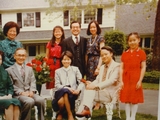  劉墉任中視駐美代表時訪問趙小蘭一家。 應聘為維州丹維爾美術館駐館藝術家。 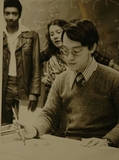  29歲擔任丹維爾美術館駐館藝術家期間。 應國父紀念館邀請參加當代名家展。 應維州布拉斯堡版畫畫廊之邀舉行個展。 應邀于維州馬丁斯維爾藝術中心與邵幼軒女士舉行聯展。 應邀於丹維爾美術館舉行個展。 應邀參加哈利福克郡藝術聯展。 應紐約聖若望大學之邀,與邵幼軒女士在中正畫廊舉行聯展。 應紐約新聞處之邀,與邵幼軒女士舉行聯展。 應田納西州諾克斯維爾市邀請,在李察巴哈畫廊個展。作品由市政廳收藏。 應南卡羅來納州格林維爾市民眾藝廊之請舉行個展。 應南卡坎普頓藝術中心之邀舉行個展。 應俄亥俄州立大學之請在垂索里尼畫廊個展,並在該校藝術系任講座一個月 應維州諾夫克摩爾畫廊之邀舉行個展。 應邀於佛羅里達潘塞可樂市魁賽畫廊舉行個展。 赴尼加拉瀑布寫生。 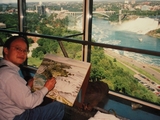  在尼加拉瀑布寫生。 出版《螢窗小語》第五集。 應邀參加西德亞東博物館中國繪畫展。作品由亞東博物館收藏。 應國立歷史博物館邀請,參加美國加州洛杉磯及舊金山之「中華當代畫家近作展」。 應邀參加第32屆全省美展。 一九七九 應聘為紐約聖若望大學中國畫指導教授。 製作並主持《中國民歌之夜》,在曼哈頓演藝高中公演。 出版譯作《死後的世界》(瑞蒙模底原著)。 於台北省立博物館舉行第二次“西窗五友畫展”。 應國立歷史博物館之邀,參加當代海外中國名家畫展。 應華李大學之邀在杜邦美術館舉行個展。 出版《螢窗小語》第六集。 入紐約聖若望大學東亞研究所。 赴大峽谷寫生。 一九八O 應邀免審查參加第九屆全國美展。 應紐約中華藝廊之邀,參加當代中國名家畫展。 應紐約中華文化中心之邀參加海外名家展。 應聖若望大學之邀在中正畫廊舉行劉墉師生畫展。 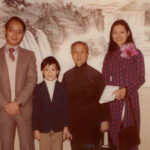  在紐約聖若望大學中正畫廊舉行個展時全家合影。 應聘為紐約聖若望大學專任駐校藝術家,兼藝術系及聖文森學院教職,教“東亞美術概論”、“中國繪畫”、“素描”、“創作經驗與技法”等課程。 應教育部國際文教處及加拿大安大略省文化部邀請,參加自由中國青年書畫家加拿大巡迴展。 與家人在美國團聚,並定居紐約。 出版與西冷教授合繪之《牡丹芍藥畫譜》。 再應維州布拉斯堡版畫畫廊之邀舉行個展。 應紐約新聞處之邀,舉行劉墉師生聯展。 一九八一 離台四年後首次返台。 由紐約聖若望大學出版《The Real Tranquility 》藝術創作電視專輯。 應鄉音合唱團之邀擔任《長恨歌》獨頌,在紐約林肯中心演出。 應紐約聖若望大學中正畫廊之邀舉行個展。 於聯副發表〈詩朗誦團體的建立與演出〉,是個人研究朗誦詩十年之重要理論作品。 主持紐約至善畫會在中華文化中心展出。 一九八二 返台。應邀于台北市龍門畫廊舉行“從絢爛到寧靜”個展。 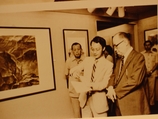  謝東閔副總統參觀劉墉畫展。 應邀於台北市“今天畫廊”舉行“從絢爛到寧靜”個展。 應邀于紐約市立皇后美術館與馬白水、胡念祖、李茂宗舉行“來自中國的藝術家展”。 應台南市政府之邀,參加“中華民國千人美展”。 出版《春之頌》畫集。 出版《螢窗小語》第七集。 出版詩、畫、散文集《真正的寧靜》。 一九八三 應聖大中正畫廊邀請舉行劉墉師生畫展。 應邀免審查參加第十屆全國美展。 與紐約大都會美術館為惲壽平花卉寫生冊之鑒定觀點差異展開論戰。 應紐約東方畫廊邀請參加紐約華裔畫家作品展。 出版《花卉寫生畫法(The Manner of Chinese Flower Painting)》(中英文版)。 應邀參加美東華人學術聯誼會舉辦之名家藝術作品展。 一九八四 應台北市立美術館邀請參加“中華海外藝術家聯展”。 獲全美中華婦女聯合會頒傑出貢獻獎。 應台南市政府邀請參加台南市文化中心落成“國畫西畫名家聯展”。 出版歷經十三年繪著完成之《劉墉山水寫生畫法(Ten Thousand Mountains)》(中英文版)。自定“師古期”告一段落。 《螢窗小語》在台印數突破五十萬本。 幽默散文集《小生大蓋》由皇冠雜誌社出版。 赴日韓寫生並收集資料,寫成〈水雲齋在奈良〉中篇小說。 一九八五 于紐約第安德斯畫廊舉行劉墉師生畫展。 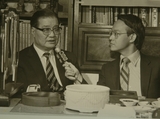  36歲擔任中視駐美代表時訪問歷史博物館館長何浩天。 應台北市立美術館邀請參加“國際水墨畫特展”。 第四度赴尼加拉瀑布寫生。 出版《劉墉翎毛花卉寫生畫法(The Manner of Chinese Bird and Flower Paintings)》(中英文版)。 入紐約哥倫比亞大學教師學院博士班,主修美術教育。 一九八六 應邀擔任美國水墨畫協會國際展主審。 應美國水墨畫協會邀請參加於紐約薩瑪甘地藝術中心舉行之二十一屆年展。 出版散文集《點一盞心燈》。 出版散文小說集《薑花》。 出版歷經十餘年編寫完成之《唐詩句典》。 一九八七 應師大美術學會邀請參加“歐美地區中國畫家聯展”。 應紐約海外電視公司邀請,製作中國繪畫技法專輯。 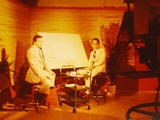  在美國電視上介紹中國繪畫。 出版從黃君璧多年研究完成之《黃君璧白雲堂畫論畫法(Inside The White Cloud Studio)》(中英文版)。是黃教授唯一一本畫論畫法專著。獲太平洋文化基金會贊助。 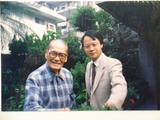  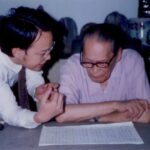  劉墉與國畫大師黃君璧。 升任聖若望大學、聖文森學院副教授。 一九八八 應台灣省立美術館邀請參加“中華民國美術發展展”。 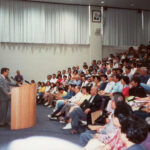  在台北市立美術館以《林玉山的藝術世界》爲題發表專題演講。 應紐約華僑文教中心之邀,與馬白水、胡念祖、張道林、王己千、廖修平、韓湘甯、陳瑞康舉行聯展。 出版從林玉山教授多年完成之《林玉山畫論畫法(The Real Sprit of Nature)》。是林教授惟一一本畫論畫法專著。獲太平洋文化基金會贊助。 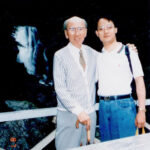  為台灣花卉翎毛大師林玉山撰寫《林玉山畫論畫法》時,共赴烏來內山寫生。 自定研究當代大師畫法期告一段落。 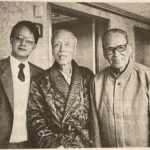  與黃君璧老師看望病癒後的姚夢谷。 偕母赴北京天津等地探親並寫生。 一九八九 出版散文小說集《四情》。 出版散文集《超越自己》。 育女小帆。 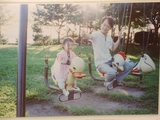  劉墉與小帆。 迎岳父母移民美國同住。 出版《劉墉畫集(The Real Tranquility)》(中英文版)。 于台北市新生畫廊舉行個展。 一九九O 應廣電基金邀請返台為製作《中國文明的精神專輯》進行評估。 赴黃山寫生。 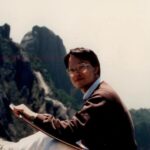  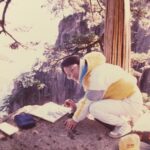  參加臺灣藝術家訪問團與張光賓等人赴黃山寫生。 為《財富人生》雜誌撰寫〈藝林瑰寶〉專欄。 出版《創造自己》、《紐約客談》。 移居紐約長島。 應台北有熊氏藝術中心邀請舉行“黃山歸來”個展。 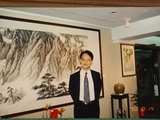  劉墉和他的黃山巨作。 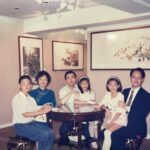  舉行「黃山歸來展」時與老友焦仁和一家合影。 《中國繪畫的省思》系列在中國時報發表。 一九九一 向聖若望大學請假三年。 應財團法人廣播電視發展基金會邀請返台,主持《中國文明的精神》腳本編撰工作。 出版《肯定自己》、《愛就注定了一生的漂泊》。 在台成立水雲齋文化事業有限公司。 攜子劉軒赴中國大陸作鄉野考察及寫生。 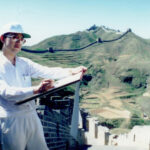  在長城寫生。 一九九二 《寒山》畫作入藏紐約中華文化中心。後移國美舘典藏。出版《人生的真相》、《生死愛恨一念間》。 再赴中國大陸考察研究。 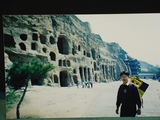  為《中國文明的精神》在中國大陸考察。 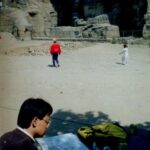  在雲崗寫生。 《中國文明的精神》編撰工作完成,共計二十七萬字,三十集。 一九九三 應邀參加中正紀念堂中正畫廊開幕“當代名家國畫油畫大展”。 當選中國美術協會理事。 出版《冷眼看人生》、《屬於那個叛逆的年代(改寫劉軒原著)》、《離合悲歡總是緣》。 開始在大陸出版各種作品的簡體字版。(在此皆不錄,只錄在台未曾出版者) 攜妻赴英法德比旅遊寫生。 一九九四 辭聖若望大學教職。 開始印製劉墉畫卡義賣。(至二〇〇二年共六十五種、八十余萬張。) 義賣與劉軒合作完成之《從跌倒的地方站起來飛揚》有聲書,為台南德蘭啟智中心募款。 攜子劉軒展開“從無聲的愛到有聲的愛”募款義講活動,兩項活動共募得逾千萬元。 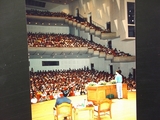  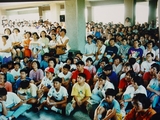  劉墉率劉軒為公益團體作募款巡迴演講,這是台南文化中心的盛況,連場外都擠滿聽眾。 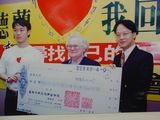  一次巡迴演講就募到淨利捌佰萬元。 獲台南市長頒“台南市鑰”。 偕妻赴挪威旅遊寫生。 出版《衝破人生的冰河》、《做個飛翔的美夢》、《把握我們有限的今生》。 在台北成立“水雲齋青少年免費咨商中心”。 一九九五 應馬來西亞華校董事聯合會總會邀請,前往吉隆玻、柔佛巴魯、雙溪、大年等地為僑教募款義講。 出版《我不是教你詐》、《迎向開闊的人生》、《在生命中追尋的愛》。 應邀免審查參加第十四屆“全國美展”。 應統一企業邀請作全台十一場巡迴演講。 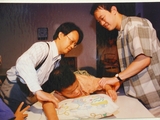  劉墉、劉軒父子在德蘭啟智中心為殘障兒童作復健。 將《在生命中追尋的愛》版稅及演講收入七十二萬元及畫卡二十萬張捐贈伊甸社會福利基金會,並舉行為殘障人義賣活動。 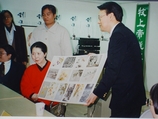  劉墉捐贈二十萬張畫卡給伊甸,由劉俠代表接受。 偕妻赴義大利寫生旅遊。 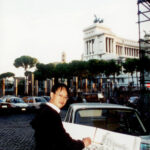  赴威尼斯、米蘭、羅馬等地旅遊寫生。 義賣有聲書《這個叛逆的年代》(馬來西亞董總出版)收入作為董總推展僑教之用。應馬來西亞《南洋商報》邀請開闢專欄。 一九九六 當選金石堂“年度風雲人物”。《迎向開闊的人生》獲選為“年度最具影響力的書”。 義賣有聲書《在生命中追尋的愛》。(伊甸社會福利基金會出版。收入作為伊甸照顧殘障人之用)。 應上海漢語大辭典出版社邀請,前往上海、杭州、北京等地學校演講。 應馬來西亞董總邀請,前往巴生、檳城等地做募款演講。   劉墉曾連續三年赴馬來西亞為董總作募款演講。 應新加坡世界書展邀請,前往新加坡演講。 將《我不是教你詐2》的版稅,新台幣五十萬元及繪畫原作等捐贈伊甸社會福利基金會,並舉行殘障娃娃家庭社區服務專案募款活動。 出版《生生世世未了緣》、《抓住心靈的震顫》、《我不是教你詐2》。 擔任花旗銀行“電話送愛心”為殘障小朋友募款活動代言人。 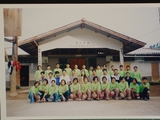  劉墉曾連續多年捐助的泰北華校。 獲內政部頒發“特別志願服務獎章”。 經金石堂統計為十年來台灣最暢銷作家。 一九九七 應中國大陸《中學生月刊》邀請撰寫專欄。稿費捐贈希望工程。 長篇小說《殺手正傳》于《中國時報》連載。 通過《中外少年》雜誌捐助206位大陸貧苦大中學生升學。 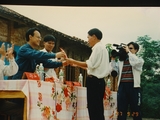  劉墉親自赴廣西偏遠的隆安山村頒發獎助學金給貧苦學生。 攜妻女赴瑞士旅遊寫生。 為馬來西亞華校董事會總會在全馬作巡迴募款演講。 義賣畫卡,為美國“美華防癌協會”募款。 出版《尋找一個有苦難的天堂》、《殺手正傳》、《在靈魂居住的地方》、《創造雙贏的溝通》(劉軒合著)。 錄製《愛的變化與飛揚》、《在靈魂居住的地方》並出資製作為附點字有聲書,交台北愛盲文教基金會贈與盲人。 應邀至瀋陽、長春、南寧、桂林等地演講及寫生。 一九九八 與高希均率“台灣暢銷作家訪問團”赴北京、上海、蘇州、西安等地演講座談,再應邀赴南京、重慶等地演講。 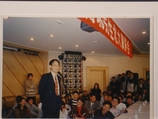  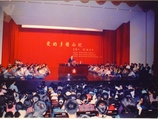  劉墉在北京大學和台灣成功大學演講不但座無虛席,連台上都坐滿人。 出版《攀上心中的巔峰》、《我不是教你詐3》、《對錯都是為了愛》。 應邀參加中國大陸全國書市開幕典禮,並應五大出版社聯合邀請赴北京、成都、昆明、西安、上海、杭州、常州、合肥等地巡迴演講。 捐出十萬元人民幣版稅與接力出版社合辦“下崗工人子女徵文比賽”。 捐贈三萬張畫卡給“美華防癌協會”義賣。 開始連續四年每年資助泰北培中小學聘教師一人。 當選“中國美術協會”理事。 由經紀人曲小俠陪同赴九寨溝寫生。 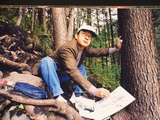  劉墉在九寨溝寫生。 一九九九 以大陸所得版稅在四川普格縣捐建成“薇薇希望小學”(至2010年共捐建40所希望小學。)。 在台成立“超越出版社”,任發行人。 應馬來西亞《星洲日報》邀請撰寫專欄。(此後與《南洋商報》專欄之稿費收入均捐給董總推展華教) 應邀免審查參加第十五屆“全國美展”。 捐款一百萬及畫作二幅供九二一大地震救災之用。 捐贈六萬張畫卡給“美華防癌協會”義賣。 應邀前往廣州、中山、長沙、北京、大連、瀋陽等地巡迴演講。 據狀向瀋陽市中級法院控告盜版經銷商。 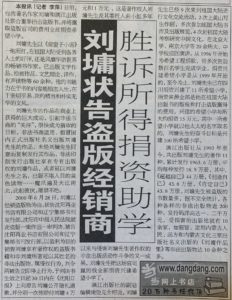  劉墉將勝訴所得捐資助學。 據“中國圖書商報”統計,劉墉在當年文學類排行榜有二十本書進入“一百大”。 因膽結石在紐約動手術割除膽囊。 出版《做個快樂讀書人》、《一生能有多少愛》、《你不可不知的人性》、《面對人生的美麗與哀愁》。 二OOO 養母劉陳淑華病逝紐約長島猶太人醫院,享年九十二歲。 居喪,捐贈十餘個台灣慈善團體,並通過紐約“燃燈助學基金會”在四川捐建十所“慈恩小學”以紀念母親。 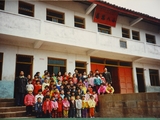  劉墉夫婦捐建的三十八所希望小學之一。 遷居紐約長島萊克瑟絲湖畔。 瀋陽官司勝訴,所獲賠款悉數捐作公益。 應邀參加南京書市,並在南京、北京、濟南、青島、深圳等地演講。 出版《抓住屬於你的那顆小星星》、《愛何必百分百》、《把話說到心窩裏》、《你不可不知的人性2》。 二OO一 在貴州捐建四所“帆軒希望小學”(帆軒一小至四小)。繼續通過“燃燈助學基金會”長期資助大陸學生。 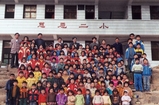  劉墉捐建的「慈恩二小」。 散文詩畫集《當我最浪漫的時候》由灕江出版社出版。 應邀參加紐約中華藝廊海外名家畫展。 出版《愛又何必矜持》、《我不是教你詐4》、《小姐小姐別生氣》、《因為年輕所以流浪》。(《小姐小姐別生氣》由大陸接力出版社以《成長是一種美麗的疼痛》出版) 攜劉軒應邀赴北京接受中央電視台《聊天》等節目訪問並演講。 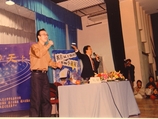  劉墉父子在北京人大演講。 二OO二 出版《把話說到心窩裏2》、《捕夢網•生命的啟示》、《不要累死你的愛》、《創造超越的人生》、《那條時光流轉的小巷》。 捐贈十萬張畫卡給美華防癌協會義賣。 在四川、貴州續捐建六所希望小學。 當選“中國美術協會”監事。(以後迄二〇〇五年均任監事) 赴瑞典、丹麥、挪威旅遊寫生。 應邀前往福州、泉州、貴州、北京、山西等地演講,並赴貴州帆軒四小參觀,赴太原華塔寺拜訪大愛師父。 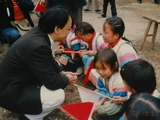  前往貴州山區探視帆軒四小的學生。 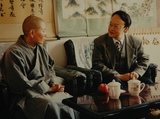  赴山西太原拜訪華塔寺育幼院的大愛師父。 為山西公益活動在太原舉行募款演講。 赴壺口瀑布寫生。 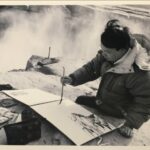  在壺口瀑布寫生。 二OO三 授權泰國南美出版公司出版“成長系列”泰文版。 應邀赴北京、南京、洛陽、安徽、鄭州等地巡迴演講,並上央視《實話實說》、鳳凰衛視《名人面對面》等節目。 赴龍門寫生盧舍那大佛。 全家在北京團聚,陪帆軒四小目疾小朋友孫琴珍在同仁醫院治療,並上中央電視臺《講述》新年特別節目及湖南衛視《真情》等節目。 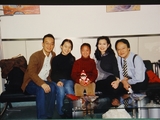  劉墉一家陪貴州盲童孫琴珍在同仁醫院診治。 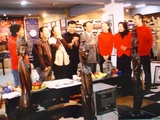  劉墉一家上中央台跨年節目。 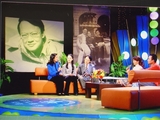  劉墉夫妻與小帆在湖南衛視的《真情》節目。 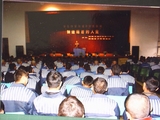  劉墉在湖南長沙教養院為受訓人演講。 出版《教你幽默到心田》、《母親的傷痕》、《愛原來可以如此豁達》、《靠自己去成功》、《愛不厭詐》、《人就這麼一輩子》、《該你出頭了》。(後兩本為《螢窗小語》四五集改編) 續在貴州捐建四所希望小學。 水雲齋及超越網站建立。 二OO四 應邀赴北京上央視《成長線上》等節目。 赴加拿大落磯山旅行寫生。 出版《點滴在心的處世藝術》、《愛,因為抓不住》、《點燃快樂的爐火》、《平凡一點多好》。(後兩本為《螢窗小語》六七集改編) 續在貴州及四川捐建五所希望小學。 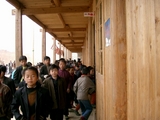  劉墉在貴州興建的希望小學,這一所是很漂亮的木造樓房。 二OO五 應邀赴北京,出席《花痴日記》新書發表會。並將首版七萬本版稅捐給“燃燈助學基金會”及“慈濟”作為救助南亞海嘯災民之用。 與盲文出版社簽約,捐出《從跌倒的地方站起來飛揚》、《在靈魂居住的地方》、《那個叛逆的年代》、《在生命中追尋的愛》、《愛的變化與飛揚》有聲書,由盲文發行義賣,版稅收入五十萬元人民幣悉數捐做公益。 續在陜西捐建二所希望小學。 出版《花痴日記》、《跨一步,就成功》、《愛為什麼總矛盾》。 應北京盲文出版社邀請赴北京、南京、上海、天津、保定、無錫、常州、昆明、瀋陽、鎮江、揚州、西安、蘭州、成都等地演講。並上央視《實話實說》、鳳凰衛視《魯豫有約》等節目。 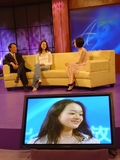  劉墉和小帆在《魯豫有約》節目。 應馬來西亞肯尼機構邀請赴吉隆坡出席「亞洲八大名師」擔任講座。 偕妻赴峇里島及黃果樹旅遊寫生。 應馬來西亞董總邀請偕妻女赴古晉、詩巫、美里、芙蓉、吉隆坡、關丹、雙溪大年作募款巡迴義講。 應新知圖書城及盲文邀請,偕妻女赴雲南昆明、玉溪及寧夏銀川演講。 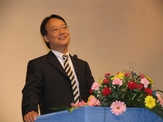  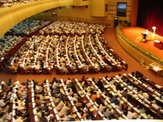  劉墉在寧夏為殘疾人團體募款演講。 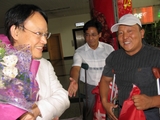  應寧夏殘疾人協會的邀請前往銀川。 全家赴貴陽並赴山村探視眼疾學生孫琴珍。 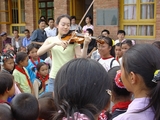  小帆在貴州帆軒四小演奏給山區的小朋友聽。 授權韓國Prunsoop出版公司出版《殺手正傳》韓文譯本。 授權馬來西亞董總出版《展現自己,神采飛揚》有聲書,版稅捐作中國大陸希望工程之用。 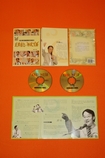  董總用來義賣的劉墉有聲書之一。 二OO六 出版《以詐止詐》。 授權盲文出版社出版《劉墉畫集》簡體字新編版,版稅捐給兩岸公益團體。 授權韓國Chungrim Publishing Co.,LTD出版《超越自己》韓文譯本。 授權泰國Amarin Printing & Publishing Public Co.,LTD出版《以詐止詐》泰文版。 出版《展現自己,神采飛揚》。 授權甘肅人民美術出版社出版《劉墉的情與藝》(中英文版)。 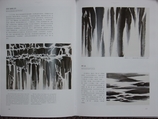  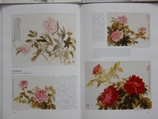  《劉墉的情與藝》由甘肅人美出版。 應廣西接力出版社邀請,前往北京、武漢、杭州、深圳、廈門、桂林、南寧等地演講。 散文詩畫集《聆聽心靈的聲音》、《作個積極尋夢的人》由長江文藝出版社出版。 應聘為廈門大學客座教授。 出版《偷偷說到心深處》。 續在陜西捐建兩所希望小學。 二OO七 授權時報出版社出版《愛是一種美麗的疼痛》台灣繁體版及新馬簡體字版。 應新加坡國際書展邀請前往獅城演講。 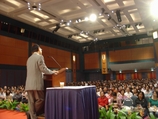  劉墉應國際書展邀請在獅城演講。 授權時報出版社出版《超越自己》、《創造自己》、《肯定自己》二十年紀念版。 續在陜西捐建兩所希望小學。 應昆明新知圖書城之邀前往昆明、麗江、大理、楚雄、芒市、騰衝、保山、文山、蒙自、個舊、開遠、彌勒、曲靖、成都、重慶、遵義、桐梓等地訪問、寫生及演講。 應美聯大講壇之邀在武漢作專題演講。 應肯尼國際機構之邀前往馬來西亞吉隆坡演講。 泰文版《小姐少爺別生氣》出版。 授權泰國Siam Inter Multimedia Public Co., Ltd.出版《尋找一個有苦難的天堂》 《我不是教你詐⑤(醫療真實面)》由廣西接力、青城文化(星馬)及時報出版社出版。 寓言故事選集《藏在故事背後的心靈》由中國盲文出版社出版。 水墨作品《夜窗外》(93×56.9cm)在香港蘇富比國際拍賣會以底價近七倍拍出。 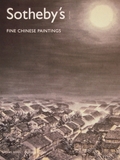  《夜窗外》被刊為蘇富比的封面。 生母周華英逝世於美國維吉尼亞州。享年九十七歲。 二OO八 《尋找一個有苦難的天堂》泰文版由Siam Inter Mutimedia Public Co., Ltd.出版。 《故事背後的心靈》由台灣的時報出版社及馬來西亞青城文化出版繁體及簡體字星馬版。 水墨作品《山城夕照》在香港蘇富比國際拍賣會以底價近四倍拍出。 《愛要一生的驚艷》繁體字版由時報出版社出版。星馬簡體字版由青城文化出版。中國大陸簡體字版由廣西接力出版社出版。 應湖南衛視、成都傳媒及新浪網的邀請為四川汶川大地震災後重建,擔任「同心行動」代言人。 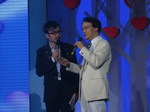  劉墉親赴四川參與賑災晚會。 應邀前往上海參加上海國際電視節的活動,並應聘為上海SMG藝術人文頻道顧問。 應香港鳳凰衛視的邀請撰稿並主持每週播出五天為期半年的《世說心語》節目。 續在陜西捐建兩所希望小學。 應廣西接力出版社邀請,前往瀋陽、北京、石家莊、西安、珠海、武漢、南寧、昆明、西雙版纳、思茅、麗江等地演講,並上北京電視、廣西電視等電視台的讀書欄目。 《世說心語──劉墉處世秘笈》、《世說心語2--劉墉教育秘笈》(簡體字版)由廣西接力出版社及馬來西亞青城文化出版。 水墨畫作《南國月夜》在蘇富比香港國際拍賣拍出。 赴西霜版納、麗江等地寫生。 受邀為西安外事學院特聘教授。 二OO九 《劉墉生活Café--8分鐘教你應對進退》(繁體字版)由台灣時報出版社出版。 《世說心語3--劉墉成功秘笈》(簡體字版)由廣西接力出版社出版。 應邀前往北京出席「兩岸四地親子論壇」。並應北大研究生會及接力出版社邀請在北京大學、中國傳媒大學、北京二中、天津南開大學以文學藝術和美麗人生作專題演講。 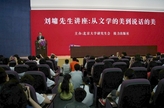  劉墉在北京大學演講。 應河南移動邀請前往鄭州、新鄉、平頂山演講。 《劉墉生活Café--8分鐘搞懂孩子的心》(繁體字版)由台灣時報出版社出版。 《劉墉生活Café——8分鐘打造自我大未來》(繁體字版)由台灣時報出版社出版。 劉墉、劉軒合着的《奮鬥書》由廣西接力出版社出版。 應中央電視台的邀請接受《藝術人生》節目專訪並揮毫。 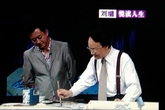  劉墉應邀上央視《藝術人生》,並在節目中揮毫。 應中國移動和中國教育輔導在線的邀請前往廣東梅州作專題演講。 應湖南衛視的邀請擔任《百科全說》節目的主講嘉賓。 應馬來西亞青城文化、馬華公會、綠野集團和星洲日報等社團邀請,赴吉隆坡、馬六甲、芙蓉、怡保等地為華教作募款演講。 二十七歲作品《桃花源圖》在香港蘇富比拍賣拍出。 與「羲之堂」簽畫作的獨家代理合約。 二O一O 劉墉、畢薇薇和子女合力完成的九分三十秒生態紀錄短片《啊啊》,由水雲齋推出。 繁體版《啊啊》由台灣時報出版社出版。 應中國移動及中國教育在線的邀請前往廣東珠海、佛山、河源作專題演講。 應河南移動邀請前往濟元、開封演講。 應湖南廣電的邀請前往長沙湖南大學等地演講。 孫女劉羽絜誕生。 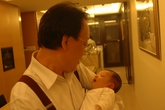  孫女劉羽絜誕生。 應華文天下的邀請前往北京接受新浪網線上訪談並攜女上北京電視《書香北京》節目。 應TVBS邀請談藝術與人生,接受《看板人物》方念華專訪。 應台北「羲之堂」之邀舉行「劉墉花痴日記個人畫展」,並在2010台北國際藝術博覽會中展出。 應中天電視邀請,與劉軒接受《小燕之夜》專訪。 新作《古都瑞雪》在香港蘇富比秋拍拍出。 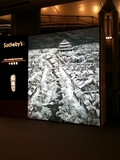  蘇富比香港國際秋拍看板選刊劉墉的《古都瑞雪》畫作。 應浙江大學貝因美親子文化研究中心邀請,前往杭州參加首屆親職教育論壇。 赴杭州西湖寫生。 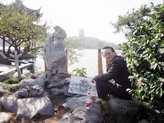  劉墉在西湖寫生。 偕妻返浙江臨安訪親尋根祭拜祖墳,並與臨安文藝界交流。 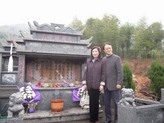  劉墉偕妻返浙江臨安祭祖。   曾任臨安縣長的祖父姚筱樓先生墓。 赴天目山寫生。 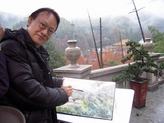  劉墉在天目山寫生。 二O一一 應中華文化總會之邀參加「百歲百畫──台灣當代畫家邀請展」。 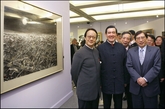  劉墉與馬英九總統合影於參展畫作《深情月夜》前。 《尋找心靈深處的感動》繁體版由時報出版社出版。簡體字版由廣西接力出版社及馬來西亞青城文化出版。 水墨新作《春江花月夜》在香港蘇富比國際拍賣春拍中以近底價四倍拍出。   劉墉作《春江花月夜》。 在鄭州「藍海中國」作專題演講。 應鳳凰衛視和北京電視台之邀,與劉軒接受《魯豫有約》、《北京青年》和《書香北京》各兩集的專訪。 應中天電視台的邀請與劉軒接受《沈春華LIFE秀》專訪。 應民視、年代電視和東森電視的邀請上《第九堂課》、《藝饗年代》和《台灣一千零一個故事》節目專訪。 應國父紀念館的邀請並由陳筱君策展,在逸仙藝廊舉行「劉墉的藝術世界」畫展。 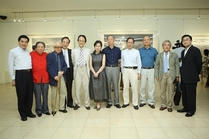  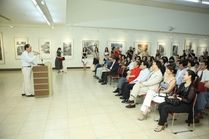  「劉墉的藝術世界」個展。 畫作《童年暮靄》在香港蘇富比國際拍賣拍出。 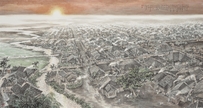  劉墉作《童年暮靄》。 偕妻赴黃山旅遊寫生。 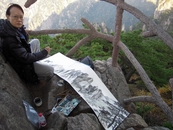  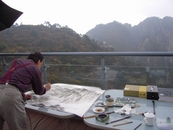  劉墉在黃山寫生。 二O一二 應接力、中華、漓江出版社和常州市教育局及海南航空公司的邀請,前往廣州、寧波、杭州、南京、北京、天津、常州、西安、海口等地演講。 《像畫一樣美麗──劉墉的藝術人生》由中華書局出版,並在中央美院以“我的藝術人生”作專題演講。 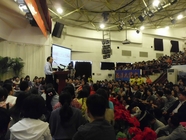  劉墉在北洋大講堂。 孫劉子川生。 窮數月之工考據訪談寫生完成八尺巨作《龍山寺慶元宵》。 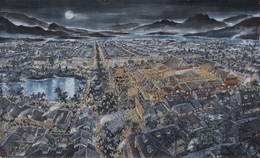  劉墉作《龍山寺慶元宵》。 畫作《戲雪》在蘇富比秋拍拍出。 《人生百忌2》由時報及接力社出版。 應邀赴上海參加ORBIS大會,畫作《奔流》義賣得1,380,000元人民幣,作為照顧盲人醫療之用。 應接力出版社和中國移動邀請前往上海,蘇州,淮北,蚌埠,合肥,成都,麗江,汕頭,中山等地演講。 偕妻女赴九寨溝寫生。 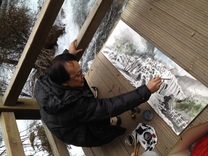  劉墉在九寨溝寫生。 水墨作品《雷聲》由國父紀念館典藏。 二〇一三 應邀參加「美麗台灣──台灣近現代名家經典作品展」,在北京中國美術館及上海中華藝術宮展出。 畫作《少帥禪園》在香港蘇富比春拍以超出底價兩倍拍出。 應浙江美術館邀請參加“一池硯水太平洋——中國水墨畫在美國的創新”展。 在北京匡時藝術論壇以“文學與藝術交融的趣味”作專題演講。 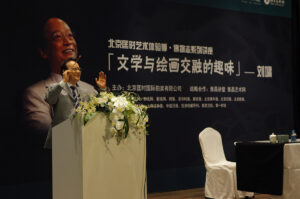  北京匡時的學術演講照片。 繪畫作品正式進入中國大陸市場。“明月松間照”等五幅畫作在北京匡時春拍拍出。 完成八尺巨幅畫作《布達拉宮月夜》。 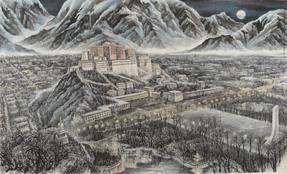  劉墉作《布達拉宮月夜》。 開始在騰訊及新浪微博陸續發表探討漢字源流的作品“漢字好好玩”。 以點描畫法在生宣紙上完成《秋豔中央公園》。 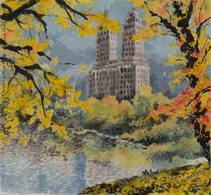  劉墉作《秋豔中央公園》。 散文集《三言良語》由時報出版社出版。 散文集《一葉一心燈》由灕江出版社出版。 二〇一四 畫作在蘇富比香港、佳士得紐約、保利香港、北京匡時拍出。 紐約酷寒,留在台北作畫。完成巨幅新水墨作品《明朝有意抱琴來》、《明月清風夜曇花》等。 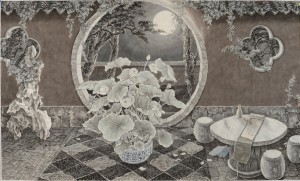  劉墉作《明朝有意抱琴來》。 四月返美,百花盛開,完成沒骨作品《雙燕嬉春風》、《醉花陰》。 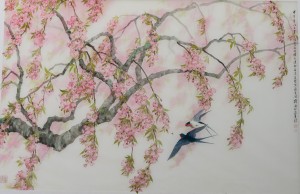  劉墉作《雙燕嬉春風》。 《人生百忌》第三集,由廣西接力、台北時報出版社出版。 偕妻赴土耳其、希臘、馬耳他、意大利旅遊寫生。 返紐約,閉關作畫。 完成一系列巨幅現代水墨作品《山城月夜》、《書卷江山》、《雪山月夜》、《歲月山河》等。 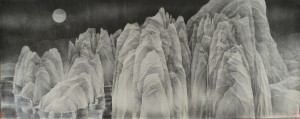  劉墉作《雪山月夜》。 赴日本京都、大阪、奈良寫生。 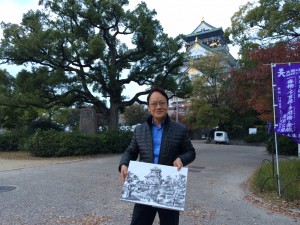  劉墉寫生大阪“天守閣”。 應中國移動等處邀請赴重慶、北京,在西南大學、清華大學、北京科技大學等地演講,並出席蘇富比北京及匡時拍賣預展酒會。 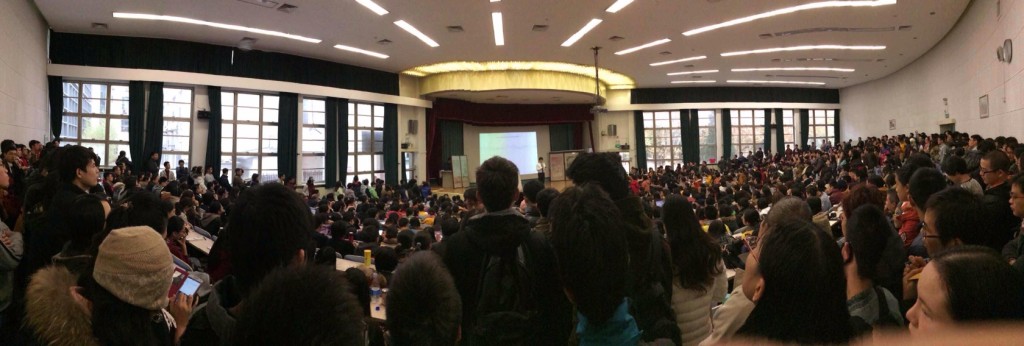  劉墉在清華大學演講。 在北京國際飯店與“雅昌”舉行認證簽約儀式及記者會。 應邀在北京APEC展出《雙燕嬉春》、《醉花陰》、《珊瑚翡翠舞秋風》、《喜事年年》四季四屏。 二〇一五 應中國藝術研究院美術研究所和北京畫院美術館邀請,並由賈方舟策展的“水雲氤夢—劉墉藝術展”,在北京畫院美術館舉行。 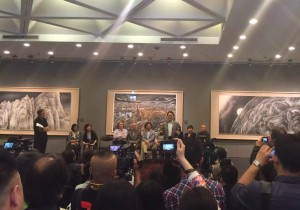  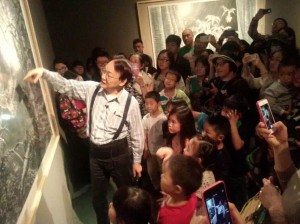  “水雲氤夢—劉墉藝術展”。 “劉墉藝術作品學術研討會”5月在北京畫院舉行,由賈方舟主持,著名藝術評論家薛永年、劉曦林、郎紹君、鄭工、王瑞廷、鄧平祥、陳劍瀾、彭鋒、邵大箴、尚輝等人出席研討。 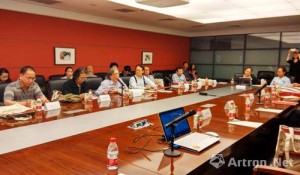  “劉墉藝術作品學術研討會”。 《中國當代名家畫集-劉墉畫集》(大紅袍系列)由北京人民美術出版社出版。 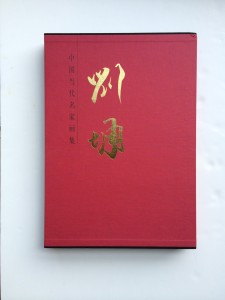  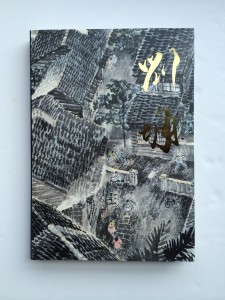  《中國當代名家畫集-劉墉畫集》(大紅袍系列)。 散文詩畫集《不瘋魔不成活》由作家出版社出版。 散文詩畫集《人生是小小又大大的一條河》由台灣聯合文學出版社出版。 應台灣公共電視《一字千金》節目邀請,編寫主持《漢字好好玩》單元,並出版同名DVD專輯為公視募款。 偕妻女赴美國黃石公園旅遊,完成十二開寫生冊頁。 完成丈二巨作《月夜潛行》(雲豹貓頭鷹)。 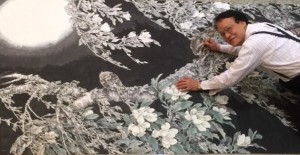  劉墉作《月夜潛行》。 應加州矽谷亞洲藝術中心邀請舉行“夢筆生畫”個人畫展。 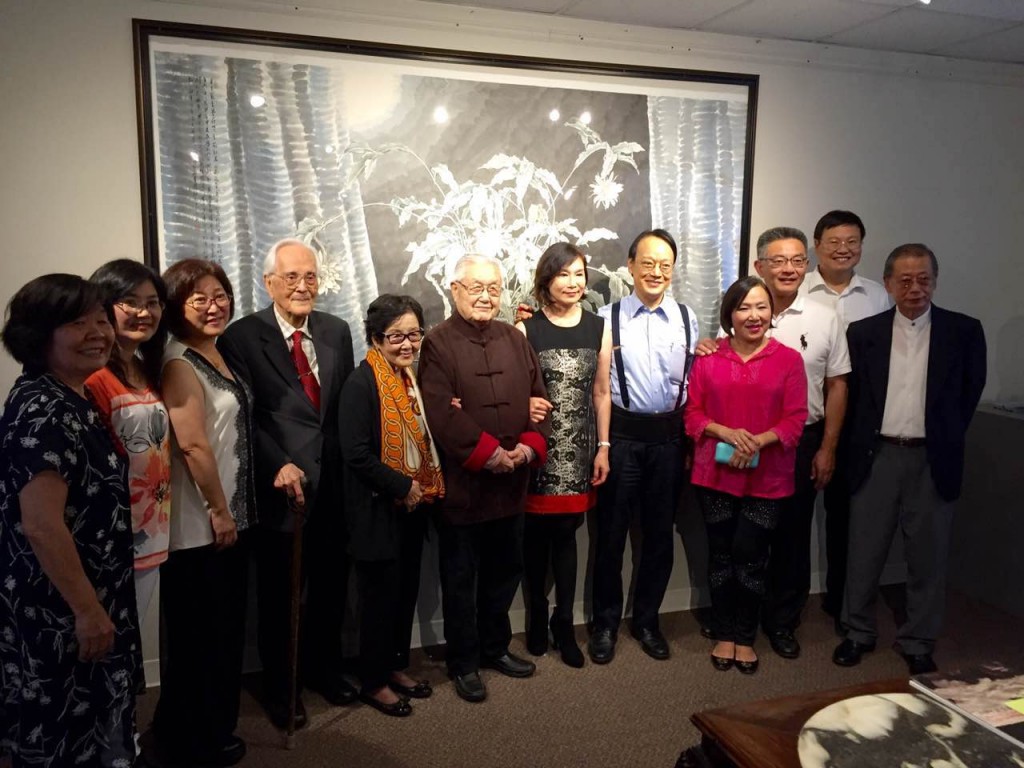  劉墉個人畫展──“夢筆生畫”。 應舊金山世界日報邀請在矽谷英特爾視聽中心作專題演講。 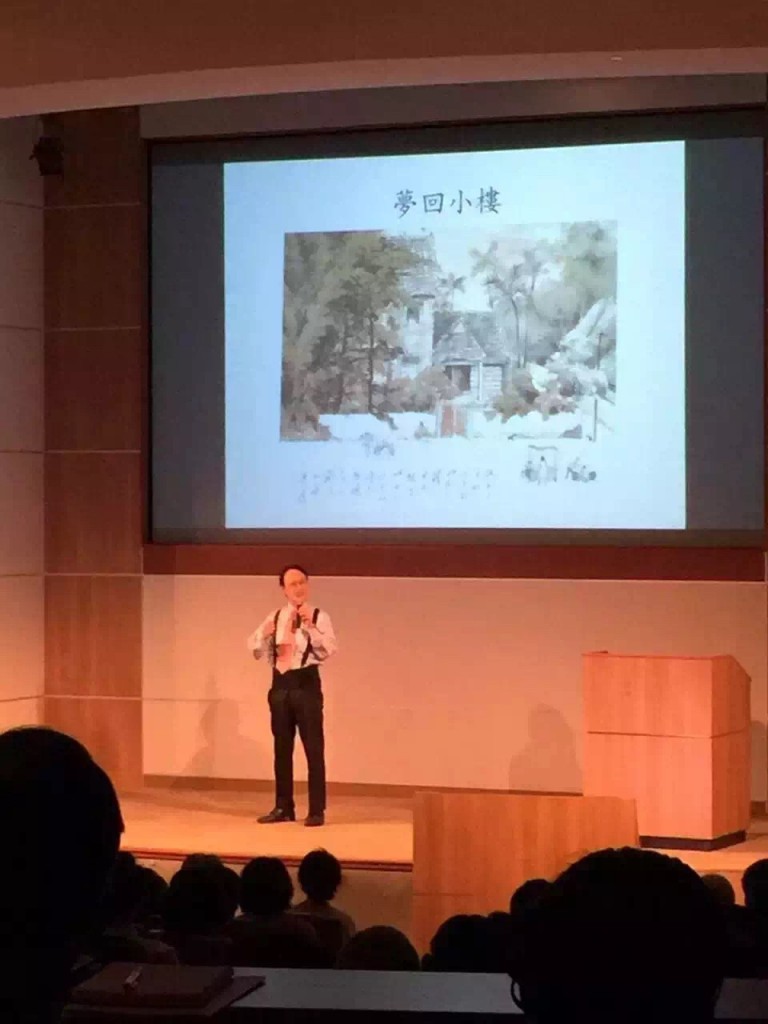  劉墉在矽谷英特爾視聽中心作專題演講。 “劉墉文藝作品研討會”在矽谷亞洲藝術中心舉行。 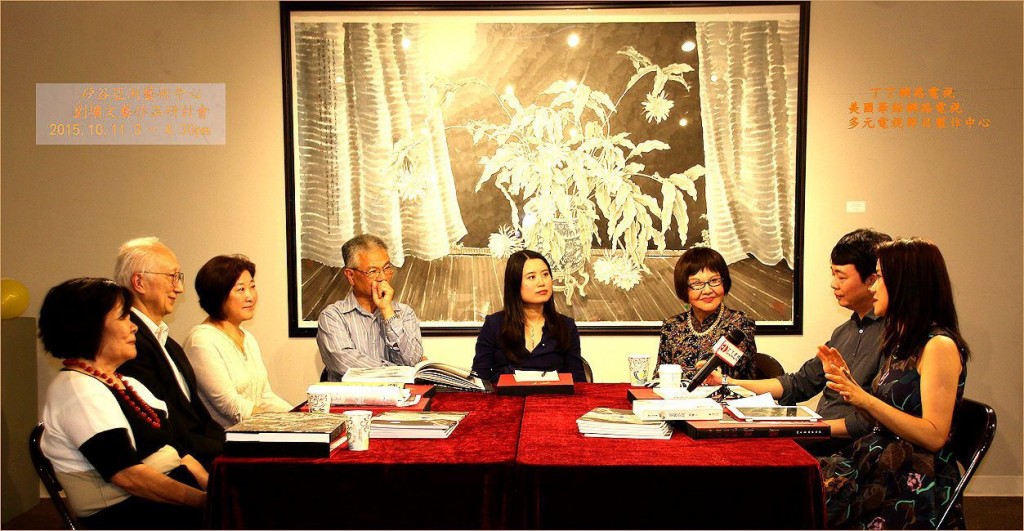  “劉墉文藝作品研討會”。 二〇一六 《年輕不老,老得年輕》由台北聯合文學出版社和北京中信出版社出版。 應中華文化總會邀請參加《 林玉山的創作與傳承展》 。 絹本水墨作品《月夜梟雄》由台中“國美館”典藏。 應矽谷亞洲藝術中心邀請參加《中國當代名家畫展》。 應山東美術館和長流美術館邀請參加《百年華人繪畫巡迴展》。 臨摹《李唐萬壑松風圖》。其後幾年陸續臨摹了《郭熙早春圖》、《范寬谿山行旅圖》、《范寬雪景寒林圖》、《范寬雪山蕭寺圖》。 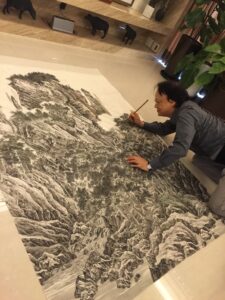  劉墉臨摹《李唐萬壑松風圖》。 完成《劉墉集子明卷無用師圈賸山圖臨黃大癡富春山居圖》。 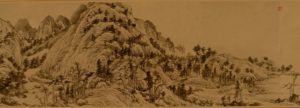  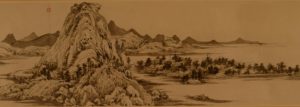  《劉墉集無用師卷賸山圖子明卷臨黃公望富春山居圖》。 完成《劉墉臨李唐萬壑松風圖》。 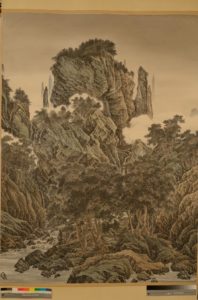  《劉墉臨李唐萬壑松風圖》。 偕妻回浙江臨安祭拜祖墳並再赴黃山寫生。 與子女合作的《漢字有意思》(中英文版)由台北聯合文學出版社出版。 偕妻赴俄國莫斯科及聖彼得堡等地旅遊寫生。 捐贈任伯年、虛谷、傅抱石、張大千、黃君璧、劉海粟等名家作品三十一件給浙江美術館。 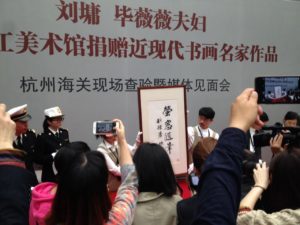  劉墉夫婦捐贈名家書畫運抵浙美海關查驗及媒體見面會。 《劉墉山水寫生畫法》開始在新浪及騰訊劉墉微博連載。 “劉墉畢薇薇中國近代書畫捐贈展”在浙江美術館舉行並出版展覽專集。 應北京人民美術出版社邀請參加人美65週年紀念「大紅袍名家新作展」。 二〇一七 捐贈張大千四尺潑墨山水《歸棹還看舊家山》及黃君璧繪製《白雲堂畫論畫法》二十個主題的全程錄影給臺北“國立歷史博物館”。 捐贈林玉山繪製《林玉山畫論畫法》全程錄影給北美館。 《白雲堂畫論畫法》簡體字版,由北京商務印書館出版。 完成《劉墉臨郭熙早春圖》。 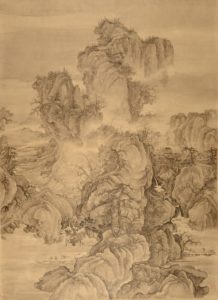  《劉墉臨郭熙早春圖》。 應浙江美術館邀請舉行“書卷江山——劉墉作品展”。 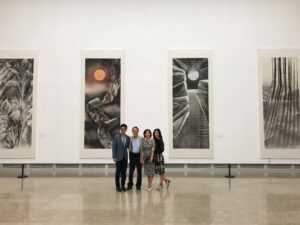  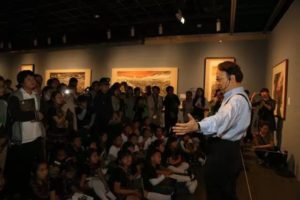  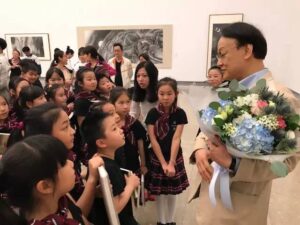  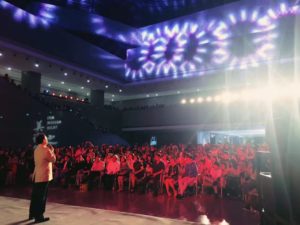  “書卷江山——劉墉作品展”。 應浙江美術館邀請在杭州人民大會堂作專題演講。 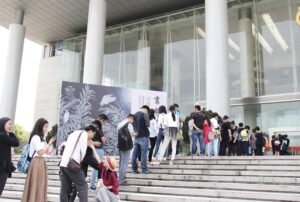  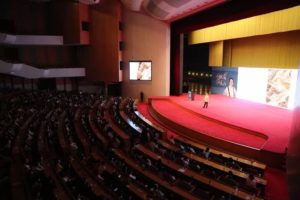  應邀在浙江省人民大會堂作專題演講。 應邀在浙大啟動“護眼聯盟”活動,並與謝宏教授舉辦聯合講座。 《劉墉集無用師卷賸山圖與子明卷仿黃公望富春山居圖》由浙江美術館收藏。 “劉墉藝術作品學術研討會”在浙江美術館舉行。 應聘為浙江美術館海外顧問。 遊富春江,訪富陽“公望美術館”、“黃公望紀念館”及黃公望隱居地“小洞天”。 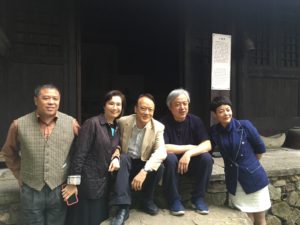  攝於浙江富陽黃公望故居。左至右為富陽學者蔣金樂、劉墉夫人畢薇薇、劉墉、浙江美術館館長斯舜威及富陽市宣傳部長夏芬。。 赴烏鎮旅遊寫生。 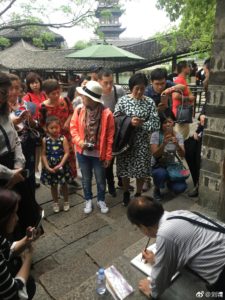  烏鎮旅遊寫生。 《書卷江山──劉墉作品集》由浙江人民美術出版社出版。 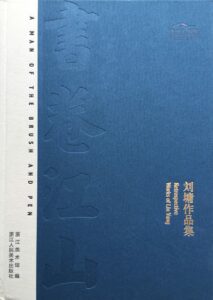  《書卷江山──劉墉作品集》。 散文詩畫集《浴火少年》由台灣聯合文學出版社出版。 《劉墉談處世》視頻課程在“十點課堂”推出。 《漢字有意思》簡體字版由北京中信出版社出版。 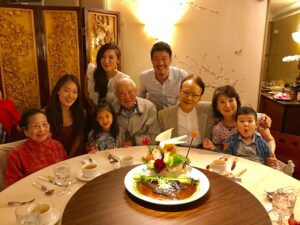  全家福由左至右為:岳母杜佑貞、劉倚帆、孫女劉羽絜、兒媳姜曉雯、岳父畢席珍、劉軒、劉墉、畢薇薇、孫劉子川。 二〇一八 寫生完成《至善園十景》冊頁。 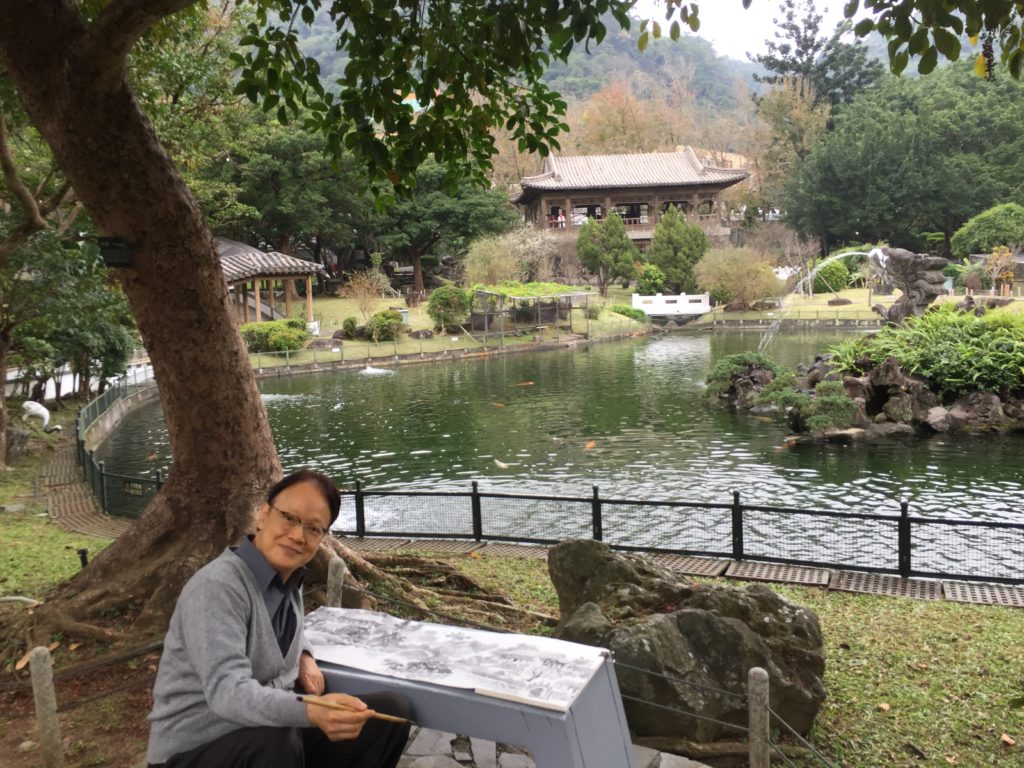  劉墉寫生台北故宮《至善園十景》並在《聯合副刊》發表導覽長文。 攜子全家赴澳洲黃金海岸避七十壽。 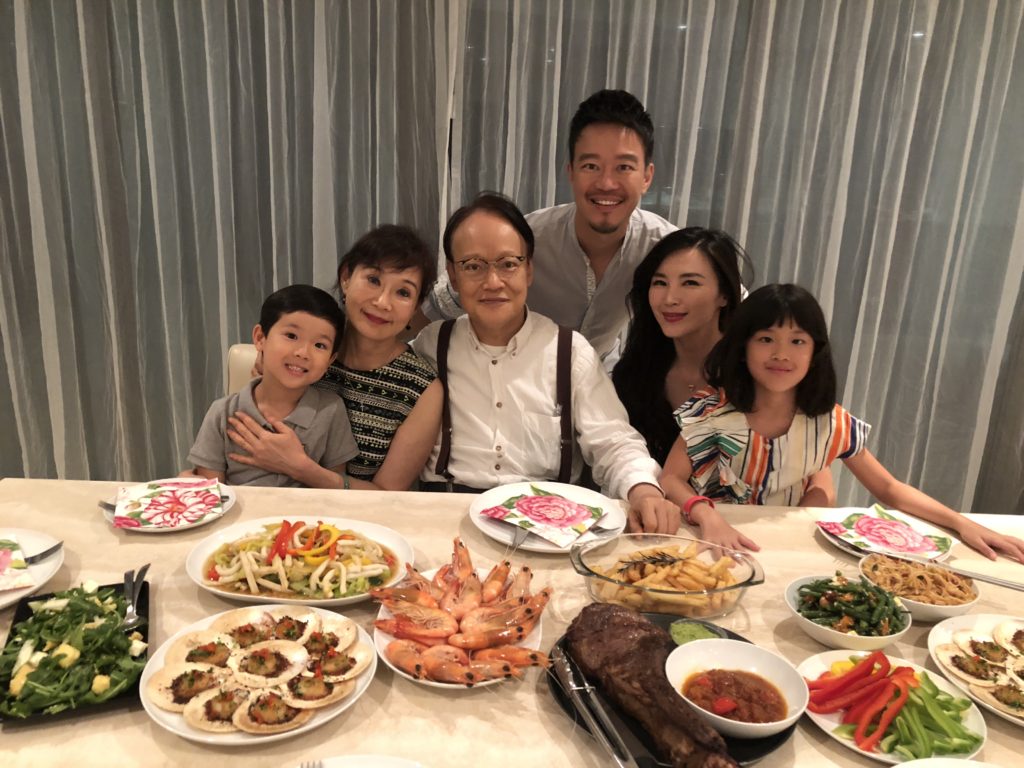  與薇薇及兒孫一家在澳洲共度七十壽辰。 完成《少帥禪園春暖花開》六尺畫作。 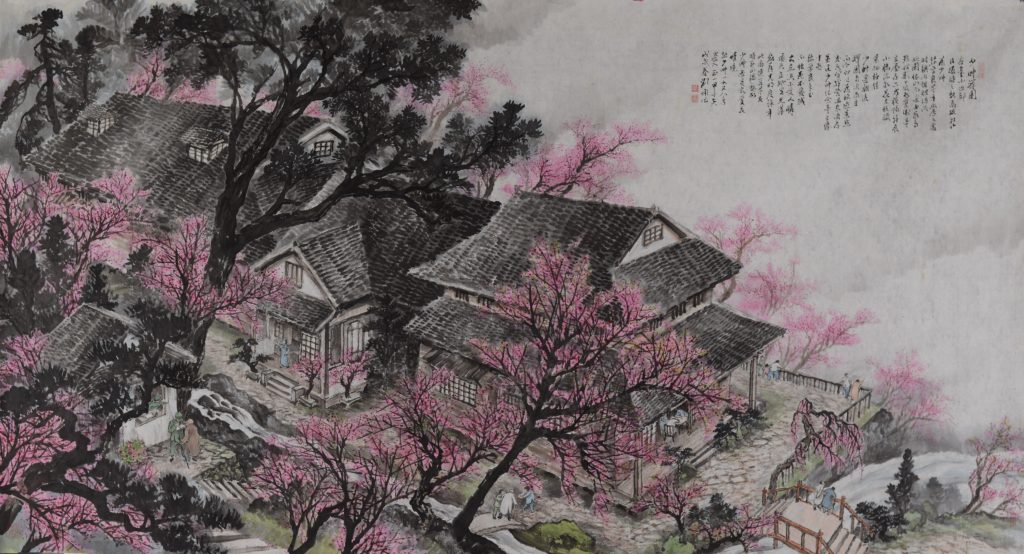  《少帥禪園春暖花開》。 《白雲堂畫論畫法》由台灣商務印書館翻印再版。 《劉墉談處世的四十堂課》由台灣商務印書館出版。 攜妻赴杭州旅遊並寫生。 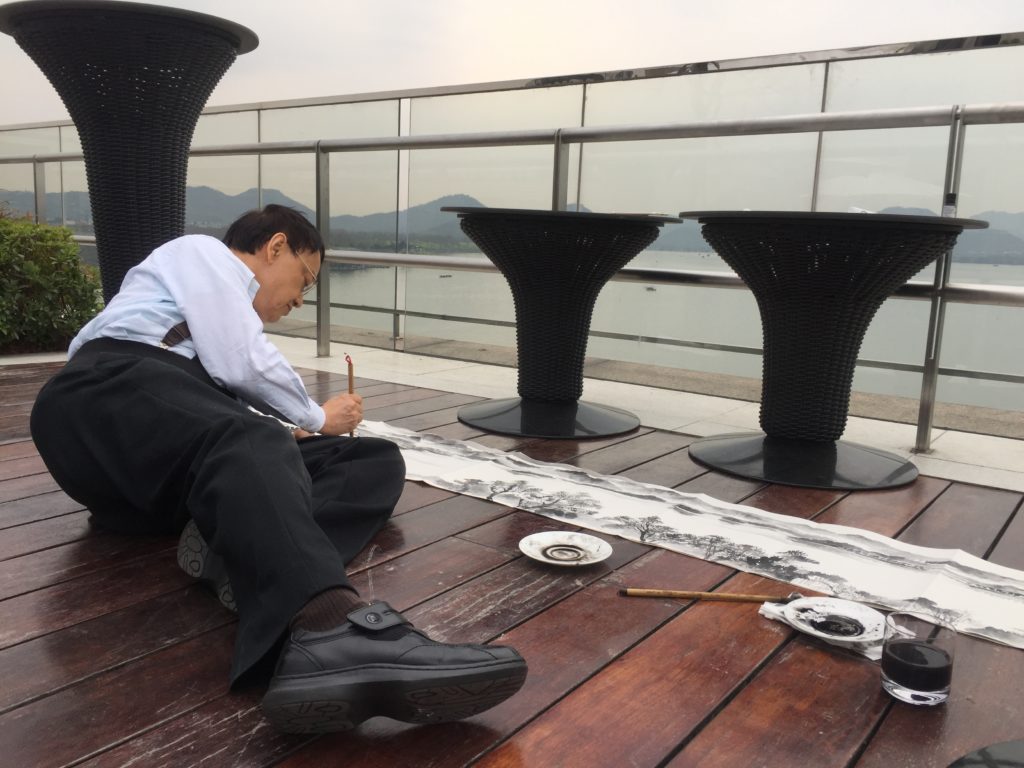  偕妻赴西湖及黃山寫生。 完成《劉墉臨范寬谿山行旅圖》。 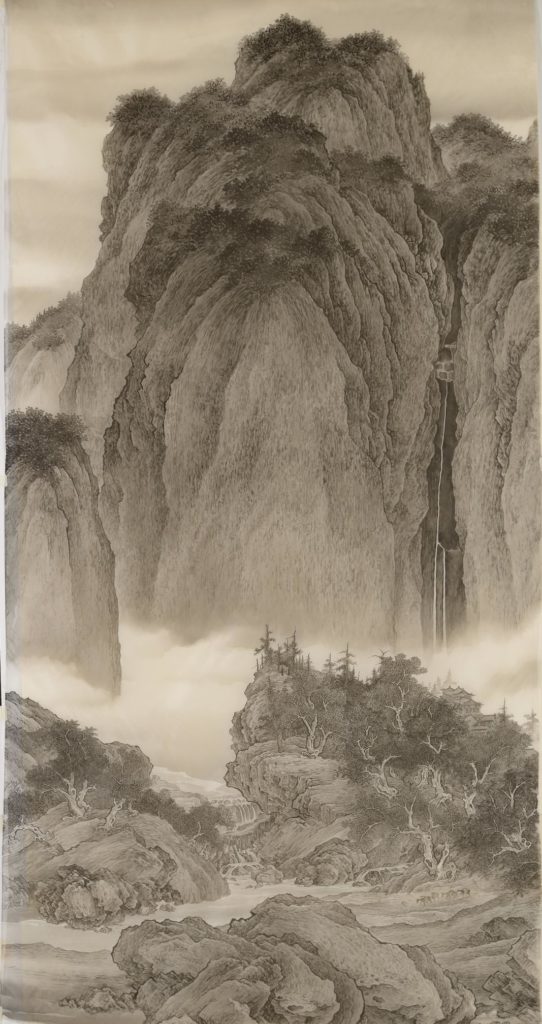  《劉墉臨范寬谿山行旅圖》。 應遼寧省博邀請舉行《夢筆生花劉墉畫展》。 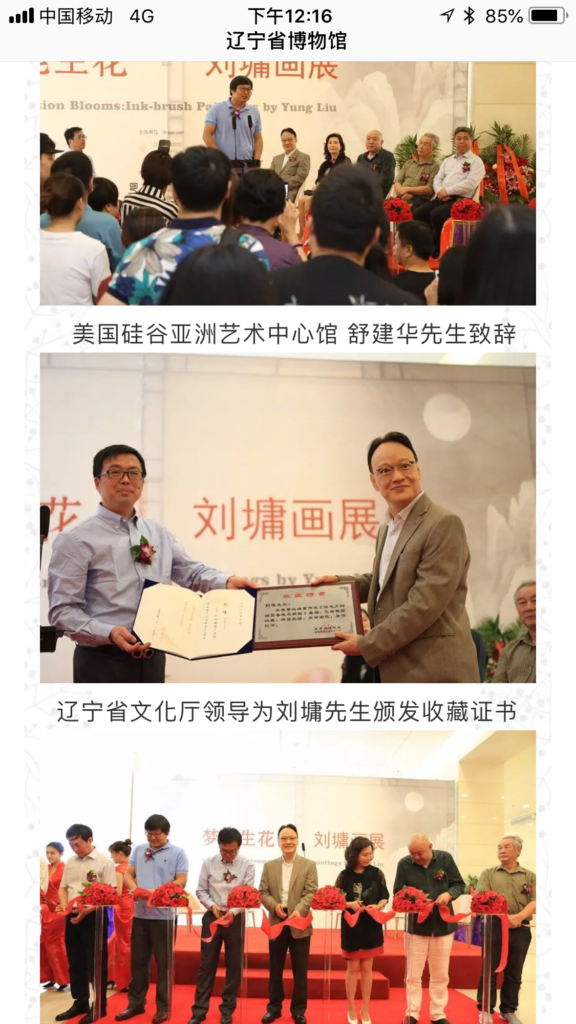  應遼寧省博邀請舉行《夢筆生花劉墉畫展》並由遼寧人民出版社出版畫集。 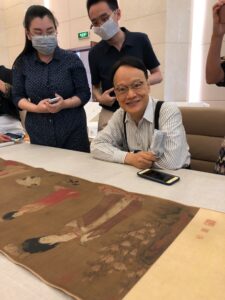  在遼寧省博物館欣賞國寶級典藏周昉《簪花仕女圖》。 《夢筆生花──劉墉畫集》由遼寧省博主編、遼寧人民出版社出版。 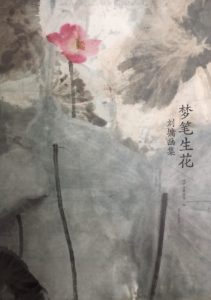  《夢筆生花──劉墉畫集》。 應邀在遼寧省博、魯迅美院、瀋陽工程大學發表專題演講。 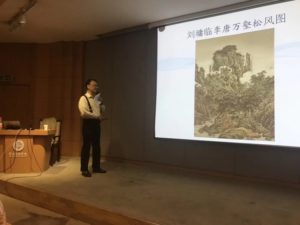  在魯迅美院發表《藝術與人生》專題演講。 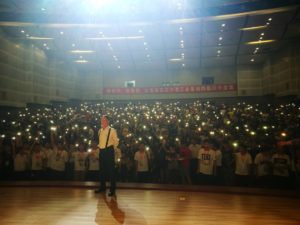  在瀋陽工程大學發表專題演講。 畫作《少帥禪園春暖花開》由遼寧省博收藏。 臨《范寬雪景寒林圖》完成。 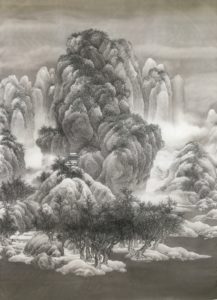  《劉墉臨范寬雪景寒林圖》。 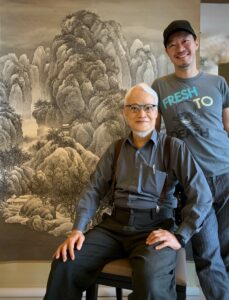  與劉軒攝於新完成的《臨范寬雪景寒林圖》前。 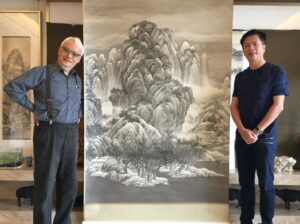  與裱裝名師陳瑞彬攝於《劉墉臨范寬雪景寒林圖》新作前。 在臺灣《文訊》雜誌發表《那段歲月的朗誦詩》,是對早年推展朗誦詩的實際與理論的回顧。 繁體字版《漢字有意思2》由台北聯合文學出版社出版。 《為白雲堂編一本秘笈》發表于國立歷史博物館十二月館刊。 被選為“中國美術協會”理事。 二〇一九 《劉墉談親子教育》音頻課程由北京“學問在線”推出。 應邀在上海中心大廈寶庫藝術中心琺瑯廳舉行《花月春風──劉墉花鳥畫展》。 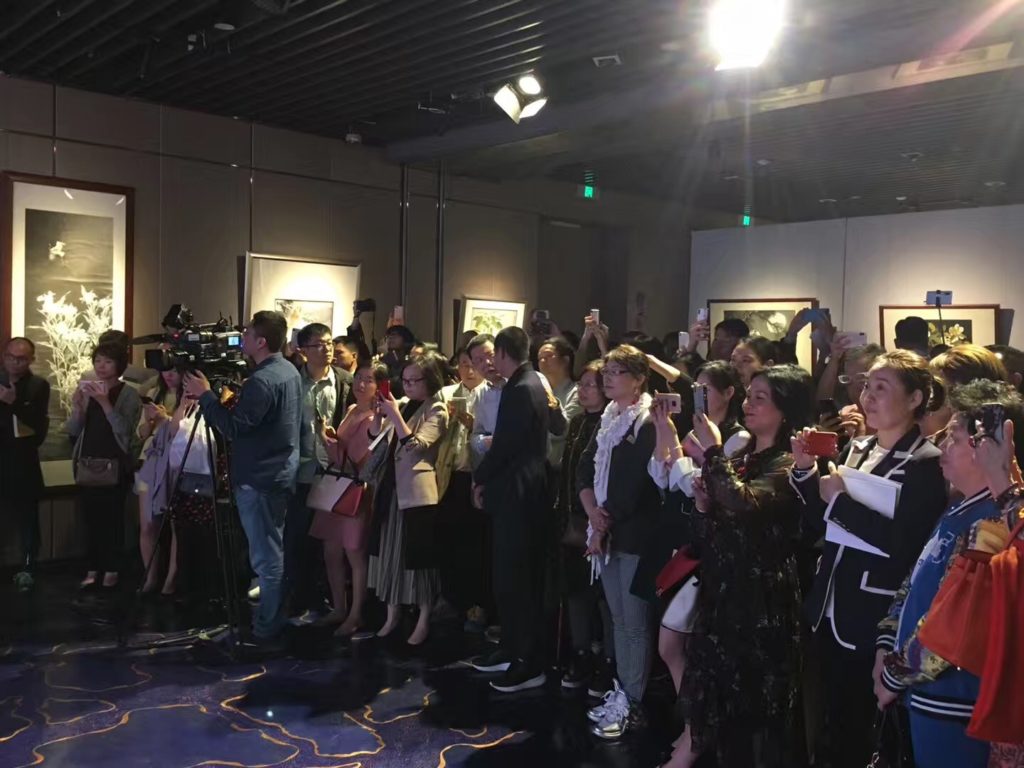  《花月春風──劉墉花鳥畫展》。 赴浙江開化根雕佛國及錢塘江源“神龍瀑布”寫生。 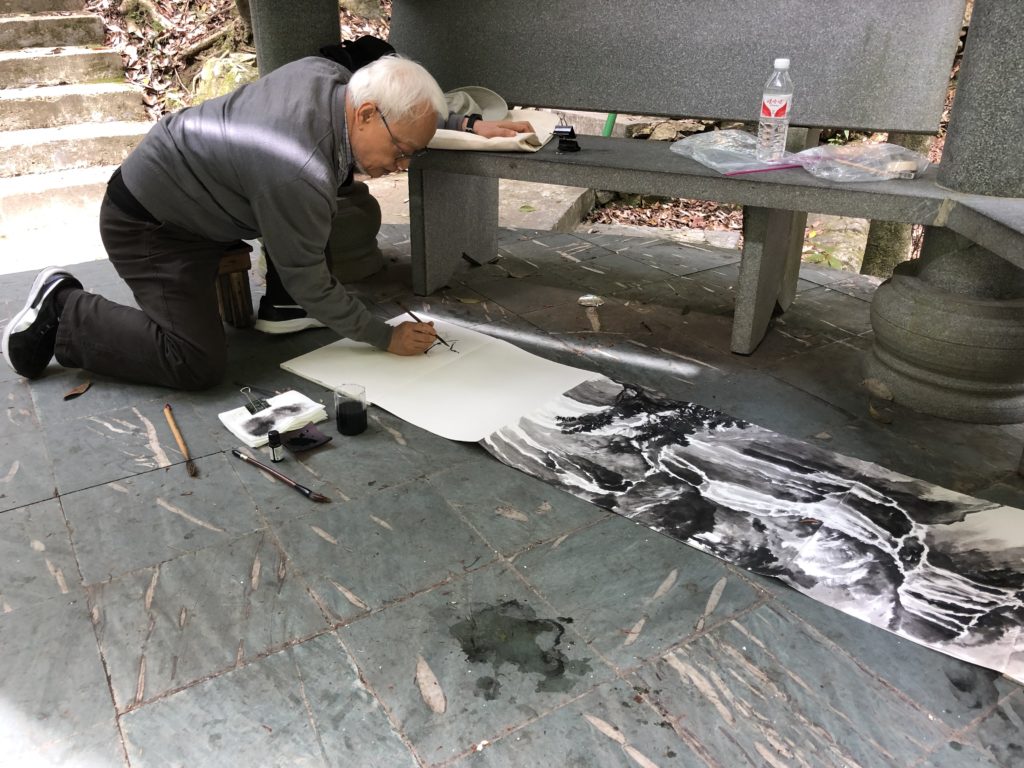  應方向東邀請赴錢塘江源“神龍瀑布”寫生。 《劉墉談親子教育的四十堂課》由臺灣商務印書館出版。 在台北完成《石虎月桃螢火瓊瑤》142×122cm。 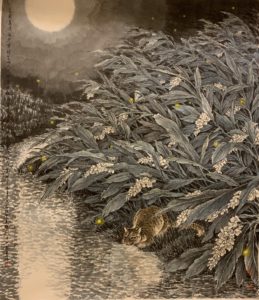  《石虎月桃螢火瓊瑤》。(142×122cm) 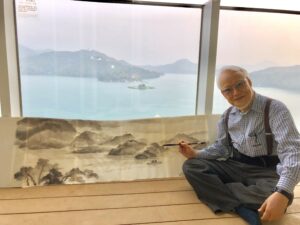  在日月潭寫生。 應邀參加中國美術協會在中正紀念堂舉辦之「 兩岸藝術創作大展」。 在紐約完成《山城夕照,滄海歸帆》142×142cm巨幅作品。 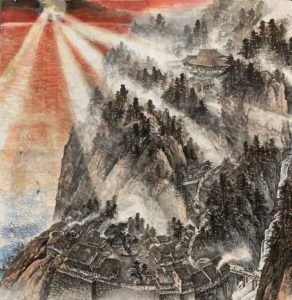  《山城夕照,滄海歸帆》。(142×142cm) 八月在紐約市接受脊髓腔狹窄及脊椎滑脫矯正手術。 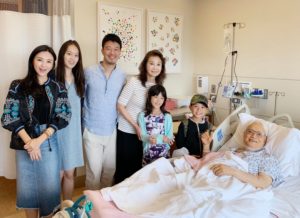  於紐約進行脊髓腔狹窄及脊椎滑脫矯正手術時與家人合影。 應蘭州市政府邀請赴蘭州大學演講。 作絹本工筆《紫色的夢》並題長詩記父女情深。 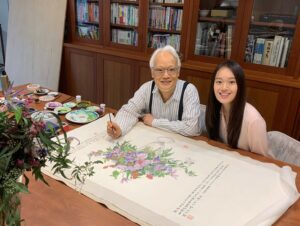  為劉倚帆結婚當面創作絹本勾勒花卉作品。 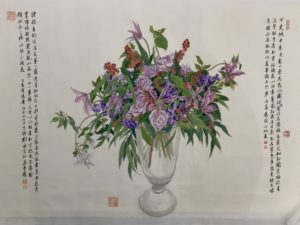  《紫色的夢》。 女兒劉倚帆與Branden Wang在紐約結婚。 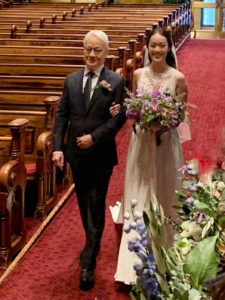  小帆與Branden Wang在紐約結婚。 應邀參加矽谷亞洲藝術中心海外華人名家展。 攜妻女赴克羅埃西亞及斯洛伐尼亞旅遊寫生。 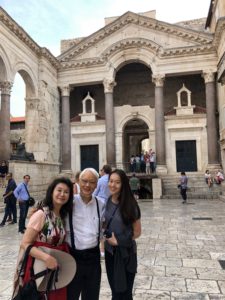    《克羅埃西亞寫生》。(紙本冊頁/28.5×158cm) 二〇二〇 錄製一分鐘小視頻在臉書及頭條微博等平臺陸續播出。 出版《爸爸不會哭》散文詩畫集。(臺北聯合文學出版社) 由臺北遠足出版社出版《小沙彌遇見劉墉》寓言故事集,由星雲大師作序,劉倚帆英譯。(簡體字版改名《隨遇隨喜》由博集天卷出版) 由臺北遠足出版社出版《我們靠自己》圖文寓言故事集。(劉倚帆英譯)獲雙北市市立圖書館及國語日報《2020年度最佳少年兒童讀物獎》。 參加中國美術協會會員作品展。 在臺北《聯合報副刊》開《話我童年的花》專欄。 創作完成《白樂天琵琶行詩意》。 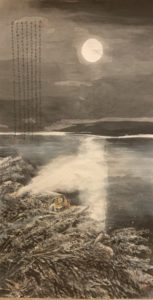  《白樂天琵琶行詩意》。 二〇二一 應長歌藝術中心邀請,參加《與花傳神畫展》。 創作完成《童年記憶中的大院子》八尺巨幅作品。 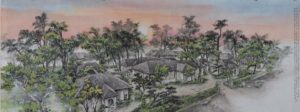  《童年記憶中的大院子》。 獲中國大陸《青年文摘》創刊四十周年選《對青年最具影響力作家》。 應長歌藝術中心邀請,參加《作家筆墨(當文學與美學遇合)》畫展。 《劉墉集無用師卷賸山圖與子明卷仿黃大癡富春山居圖》(浙江美術館藏)參加杭州市富陽公望美術館《公望富春共繪新圖展》。並以影片介紹創作臨摹的過程。 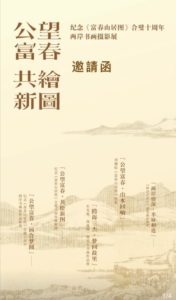  《公望富春共繪新圖展》。 將不同時期手稿一批捐贈「中央圖書館」典藏。 應邀以《琵琶行詩意》參加在台北中正紀念堂舉辦之「中國美術協會90週年大展」。 應邀擔任「中國美術協會顧問」。 《當時明月/龍山寺慶元宵》圖文書及拼圖由台北「長歌藝術中心」出版。版稅30萬元捐贈南機場幸福食物銀行。 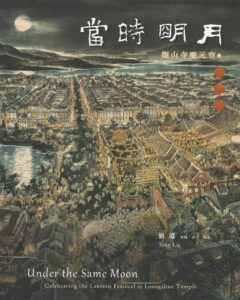  《當時明月/龍山寺慶元宵》。 藝術理論作品《劉墉帶你走進故宮的鎮館三寶》(包括視頻解說)由台北羲之堂出版。 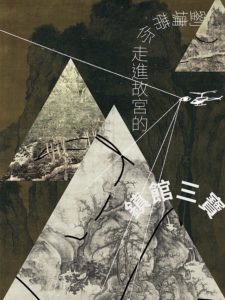  《劉墉帶你走進故宮的鎮館三寶》。 二〇二二 《千萬別養出個媽寶》由台北聯合文學出版社出版。 應邀參加師大百年校慶校友美術創作邀請展。 在七月號《典藏雜誌》發表近萬言論文《范寬點描畫法的鼎足三作》(後由北京《中國美術》轉載)。 在十月號《典藏雜誌》發表近萬言論文《謎樣的鵲華秋色圖》。 捐贈《白樂天琵琶行詩意》畫作給台師大美術館收藏。 獲選為「世界文學節」中文作家代表,接受紐約公立圖書館在線訪談。 由接力出版社出版散文集《人生便利店》。 應郭木生文教基金會邀請、陳筱君策展在台北「大院子畫廊」,舉辦為時53天的《劉墉畫我童年》個展並出版《劉墉畫我童年》畫集。 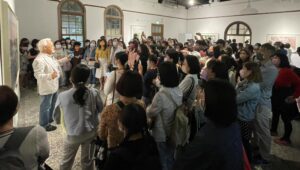    《劉墉畫我童年》個展。 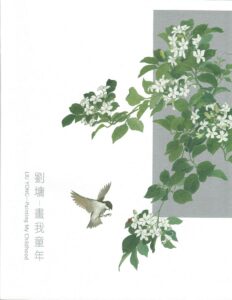  《劉墉畫我童年》畫集。 由羲之堂策劃、台華窯製作劉墉畫作(限量300套)瓷器作品。 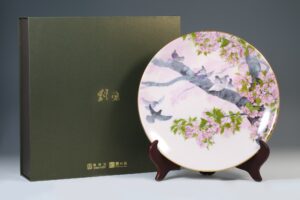  台華窯製作劉墉畫作瓷器。(限量300套) 捐贈畫作《童年記憶中的龍安國小》給母校台北龍安國小。 參展2022台北國際畫廊博覽會(羲之堂舉辦)。 應邀參加中國美術協會在台北國立藝術教育館舉行之2022會員聯展。 《劉墉帶你看宋畫》(即《劉墉帶你走進故宮的鎮館三寶》簡體字版)由浙江人民出版社出版。 二〇二三 劉墉寫作出版50週年:自1973年迄今出版文學藝術散文小說詩歌畫冊工具書等總計117本(選編及更換書名者不計),無一年間斷。 由台北聯合文學出版社出版劉墉寫作50週年紀念版《我不是教你詐》。   劉墉寫作50週年紀念版《我不是教你詐》。 《點一盞心燈》捷克文譯本在布拉格出版。 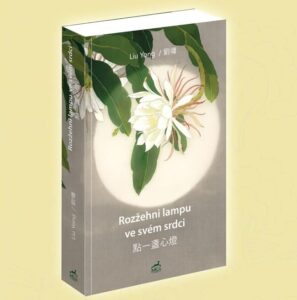  捷克文譯本《點一盞心燈》。 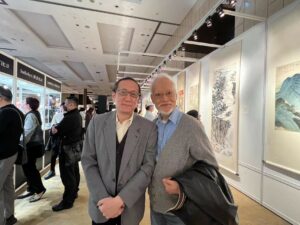  劉墉與蘇富比中國書畫專家張超群攝於台北拍賣預展會場。 應邀在「矽谷亞洲藝術中心」舉行「哪個花鳥不多情/劉墉的工筆世界」個展,並舉行學術研討會。   《哪個花鳥不多情/劉墉的工筆世界》個展。 美國加州矽谷亞洲藝術中心出版《哪個花鳥不多情/劉墉畫集》 二〇二四 外孫王維三月誕生於紐約。 應邀前往北京參觀國家博物館,並商討在該管舉辦個展事宜。 由藝術家出版社出版《臺灣美術全集.劉墉卷》。 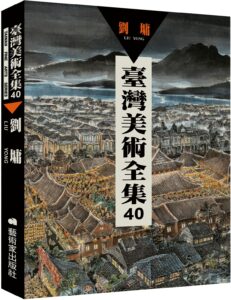  《臺灣美術全集.劉墉卷》。 二〇二五 散文集《那條時光流轉的小巷》重排增訂版由台北九歌文學出版社出版。 散文繪畫集《話我童年的花》由台北聯合文學出版社出版。 |
| LIU YUNG:A CHRONOLOGY |
| 1949 Born in Taipei,February.
1958 Father deceased. 1962 A fire destroyed his home and property.Mother and son were forced to live in a thatched hut built among the ashes. 1964 Received by Mr.Hu Nian-zu as student of landscape painting. 1965 Dismissed from school for one year due to sickness;selftaught poetry and painting. 1968 Matriculated in the Department of Fine Arts,Taiwan Normal University. 1970 Acted the main role in stage play Red Nose(or,The Happy Man)by Mr.Yao Yi- wei. 1971 Awarded “Eminent Youth Poet Prize” of the “China New Poetry Society”. 1972 Participated in the Taiwan Normal University Teachers and Students Art Exhibition;awarded the leading prize offered by the Minister of Education. 1973 Hosted Television Program “Every Minute or Second Counts”. 1974 Invited to participate in “the 3rd Contemporary Leading Painters Exhibition”,“the 7th National Art Exhibition”,and “the 10th Asia Contemporary Art Exhibition”. 1975 Researched Art Education in Japan and Korea. 1976 Produced“Current Affairs Forum” for “China Television Company”. 1977 Researched art and culture in Europe;after returning,produced special program“Art Tour in Europe”for “China TV”. 1978 Began lectures and exhibitions in the United States with recommendations from the “National Museum of History” and “Execute Branch News Bureau”. 1979 Began teaching Chinese Painting at St.John’s University in New York. 1980 Invited to participate in “the 9th National Art Exhibition” in Taiwan,R.O.C.. 1981 Held individual exhibition at Chung-Cheng Art Gallery,St.John’s University. 1982 Received his M.A.from St.John’s University. 1983 Held a student-teacher exhibition at the Chung-Cheng Gallery,St.John’s University. 1984 Invited by the Taipei Fine Arts Museum to participate in the “Overseas Chinese Artists Joint Exhibition”. 1985 Held student-teacher exhibition at the de Andreis Gallery in New York. 1986 Invited to be jury-judge for the International Exhibition of The Sumi-e Society of America. 1987 Invited by the Taiwan Normal University Fine Arts Association to participate in the “Overseas Chinese Painters Exhibition”. 1988 Invited to participate in the “Commencement Exhibition” for the Provincial Art Museum of Taijong. 1989 Published collection of prose and short stories,The Four Sentiments. 1990 Researched and wrote television documentary series, The Spirit of Chinese Culture. 1991 Published Establish Yourself and Love Determines a Life of Wandering. 1992 Paintings exhibited at the New York Chinese Cultural Center. 1993 Invited to participate in the “Great Contemporary Chinese Painters Exhibition” at the opening of the CKS Memorial Gallery in Taiwan. 1994 Resigned teaching post at St. John’s University. 1995 Toured Malaysia, giving benefit speeches to raise funds for the United Chinese School Committees’Association of Malaysia (UCSCAM). 1996 med by Taiwan’s Kingstone Bookstore as “Personality of the Year”. 1997 Wrote a column for China’s High School Student Monthly magazine. 1998 Published Climbing the Summit in Your Heart, I’m Not Teaching You to Be Conniving 3, and Right or Wrong It’s All for Love. 1999 Built his first elementary school in China’s rural areas (will have donated 36 by 2006). 2000 Invited to participate in the Nanjing Book Fair. 2001 Published My Most Romantic Times, Why Must Love Continue, I’m Not Teaching You to Be Conniving 4, Little Miss Please Don’t Get Mad, and I Wander Because I’m Young. 2002 Published Talking Into the Heart 2, Dreamcatcher, Don’t Wear Out Your Love, Exceeding in Life, and The Alley Where Time Flows By. 2003 Signed a contract with Thailand South America Publishing Company to publish the “Yourself ” series in Thai. 2004 Published How to Manage Life, Loving What’s Not Yours, Light the Fire of Happiness, and Simpler is Better. 2005 Fundraised in China for South Asia tsunami relief. 2006 Published Fight Connivance with Cunning. 2007 Signed with China Times Publishing Company to publish Love Is a Type of Beautiful Pain (Traditional Chinese and Malaysia Simplified editions). 2008 Published the Thai edition of “Searching for a Misery-Filled Heaven.” 2009 Three volumes of “Yung Liu Life Café – 8” were published by Taiwan’s Reading Times. 2010 Short film “Ah Ah,” a family collaboration, premiered on his SYZ Books website. 2011 Invited by the General Association of Chinese Culture to participate in the “100 Years 100 Paintings – Taiwanese Contemporary Artists Exhibition.” 2012 Invited by publishing companies, Changzhou City’s Bureau of Education and Hainan Airlines to give speeches in Guangzhou, Ningbo, Hangzhou, Nanjing, Beijing, Tianjin, Changzhou, Xi’an, and Haikou, among other cities. 2013 Invited to participate in the exhibition “Beautiful Taiwan—Classic Works of Taiwan’s Contemporary Artists” at Beijing’s National Art Museum of China and Shanghai’s China Art Museum. 2014 His works of art were successfully auctioned by Sotheby’s in Hong Kong, Christie’s in New York, Poly in Hong Kong, and Council in Beijing. 2015 Solo exhibition titled “Dreams of Natural Tranquility – Liu Yung Art Exhibition,” curated by Fangzhou Jia and sponsored by the Institute of Fine Arts at the China Academy of Art, took place May 14-16 at the Art Museum of Beijing Fine Art Academy. 2016 ”Not Old in Youth, Youthfully Getting Older” was published by Taipei’s Unitas Publishing Co. and Beijing’s Citic Press Corp. 2017 Donated Zhang Daqian’s landscape ink painting “Looking Back at the Mountains of Home” and Huang Junbi’s full video recording of “White Cloud Studio Art Theory and Technique” to the National Museum of History in Taipei. 2018 Completed album of sketches, “Ten Scenes of Zhishan Garden.” 2019 Podcast series “Liu Yong Discusses Child Education” launches in Mainland China. 2020 Began regularly posting short videos on Douyin, Kuaishou, Xiaohongshu, Facebook, WeChat, Weibo, and Toutiao. 2021 Participated in group exhibition, “Welcoming Spring,” at Chang Ge Gallery in Taipei. 2022 ”Don’t Raise a Big Baby” was published by Taipei’s Unitas Publishing Company. 2023 Marks the 50th anniversary of Liu Yong’s first published book. Since 1973 and publishing every year since, he has published 117 books (not including anthologies and republications). 2024 Grandson was born in New York. 2025 A new edition of “The Alley Where Time Flows By,” a collection of essays, was published by Chiu Ko Literary Publishing in Taipei. |
SYZ站長
水雲齋的「心」很大,但「規模」很小,於1991年成立時,以《超越自己》和《我不是教你詐》等勵志出版品影響了大中華地區數代青年學子。20餘年來,水雲齋以「文學、藝術、教育」為主力營運方向,承接影視專輯策劃製作、舉辦演講和企業訓練、與國內外眾多基金會合辦公益活動,並持續捐贈資源給國內外公益組織,致力於對社會有正面的貢獻。

